

The First African Baptist Church in Savannah
The First African Baptist Church, in Savannah, is one of the most historically significant buildings in town. We encourage everyone to plan a visit to this amazing location
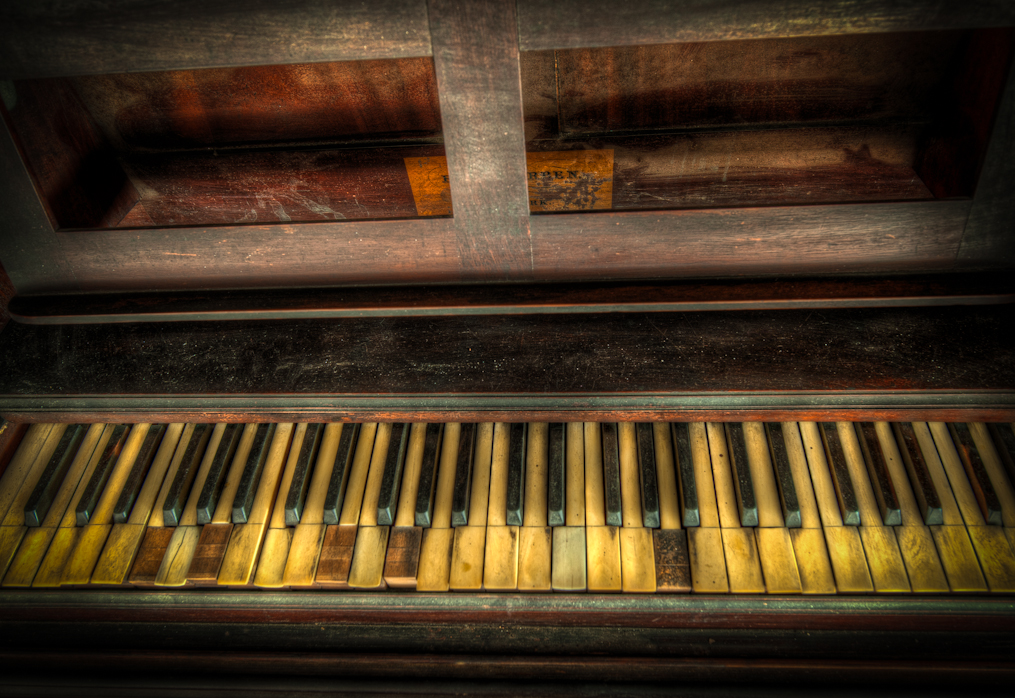
The First African Baptist Church has a long and storied history in Savannah Georgia. It is thought to be the oldest African-American Congregation in the United States. The congregation was formed in 1733 by Reverend George Leile. The building which houses the Church was finished in 1859, almost 100 years after the land was obtained for the church. The man who oversaw the completion of the Church was Reverend William J. Campbell.
The First African Baptist Church holds tours on weekdays. While the hours are listed to the right we advise that you call the Church ahead of time to make sure that the tours and their starting times have not changed. If you are going to only tour one building while in Savannah, the First African Baptist Church is an excellent selection. The historical features inside of the Church are unbelievable at times. From the original 1832 Pipe Organ to the carvings on the ends of the Pews which were made by slaves, the Church has no short of hidden secrets to keep you wanting to explore.

The Underground Railroad and the First African Baptist Church
The First African Baptist Church was used as a stop along the Underground Railroad. For the safety of those who offered refuge, no records were kept of how many slaves used the Church on their way to the North. A unique feature in the Church which relates to the Underground Railroad are the holes in the floor in certain areas of the Church. These holes are arranged in a pattern known as a Congolese Cosmogram. This pattern represented life so it fits with the church. The real reason for these holes was breathing holes for slaves who were hidden beneath the floorboards.
A different design aspect of the Church also signifies it as a stop along the Underground Railroad. The ceiling of the Church is designed with what is called a Nine Patch Quilt. This design showed that this was a place of resting and safety for the slaves who used the Church. Of course, it was a hidden signal that only certain people knew about. Most people would have thought the Nine Patch Quilt simply a beautiful design.
To gain entry into the Underground Railroad area of the Church slaves would have entered through a tunnel. The location of where this tunnel remains a mystery to this day. Some people believe the tunnel went all the way to the River while others speculate that it may have been connected to one of the neighboring structures.
The Belltower
In the front of the First African Baptist Church is a bell tower going up two or three stories. What you see below is the bell that is in that bell tower. If you want to see the view of the interior of the church just follow this link: First African Baptist Church in Savannah.
When we were photographing inside of the First African Baptist Church I simply followed simple hand-made ladders up a few stories until I arrived at the top floor. You could tell that it has been some time since someone else was at the top of the bell tower. The dust was thick and evey where.
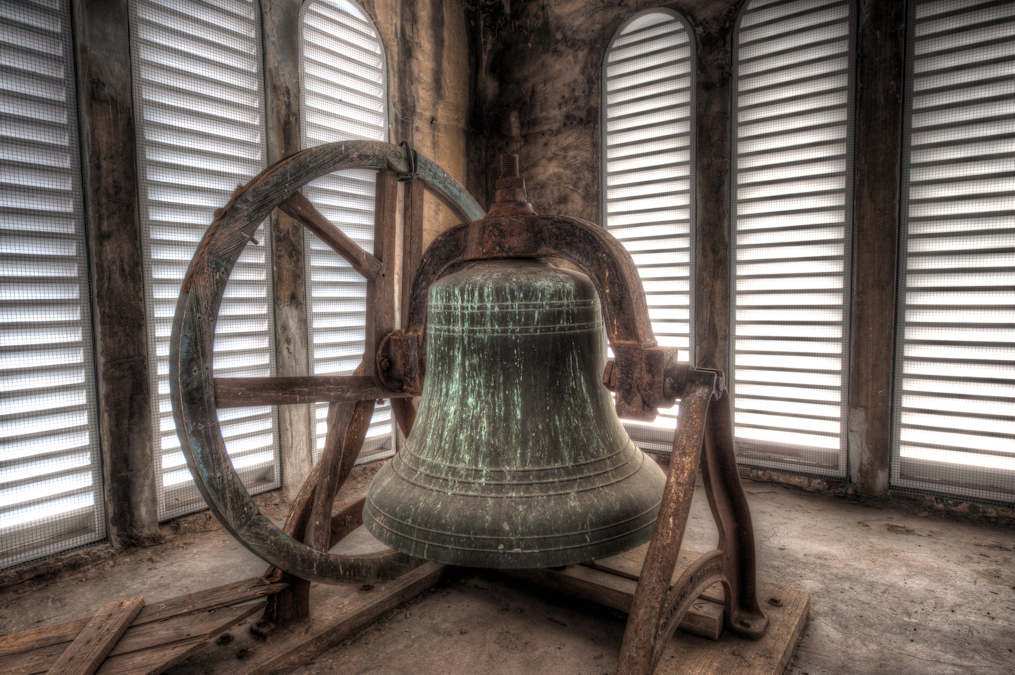
The Ceiling
If you notice the ceiling, it is designed as a 9 patch pattern. This was done on purpose to resemble a quilt. During the days of slavery the Underground Railroad was used by thousands, perhaps tens of thousands of slaves as they made their way north to freedom. The Quilt was a sign of safety and designated this place as a safe house along the Underground Railroad.
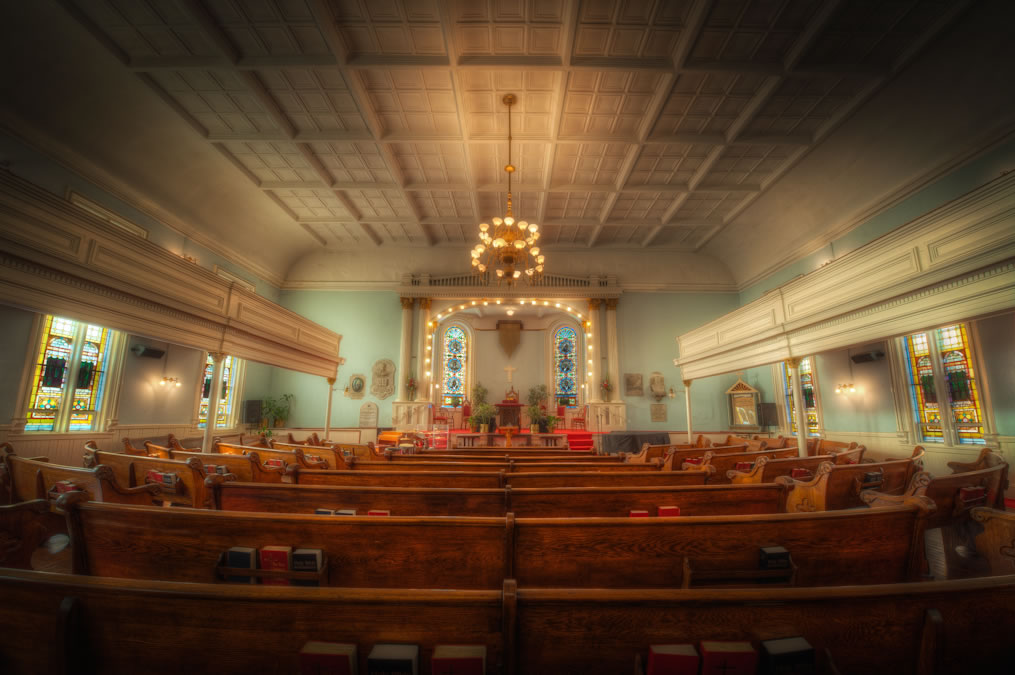
The Church Today
In present times the First African Baptist Church is still a place of worship. This is the main reason why tours of the Church are not given on the weekend. The First African Baptists Church is a leader in the community, helping out all who need it. The programs enacted by, and offered through the Church have surely changed the lives of many people living in Savannah Georgia.
Visiting the First African Baptist Church
The First African Baptist Church offers tours of their historic building. You can contact them at (912) 233-6597 for more information. They offer these guided tours on every day of the week except Sunday and Monday. Of course things could change so give them a call. We can highly recommend a tour of this great historic place in Savannah.
Other Squares
- Calhoun Square
- Chatham Square
- Chippewa Square
- Columbia Square
- Crawford Square
- Elbert Square
- Ellis Square
- Franklin Square
- Greene Square
- Johnson Square
- Lafayette Square
- Liberty Square
- Madison Square
- Monterey Square
- Oglethorpe Square
- Orleans Square
- Pulaski Square
- Reynolds Square
- Telfair Square
- Troup Square
- Warren Square
- Washington Square
- Whitefield Square
- Wright Square
Our Savannah Tours
- Historic Church Tour
- Bonaventure Cemetery Tour
- Colonial Park Cemetery Tour
- Stories of old Savannah
Where is the First African Baptist Church?
The First African Baptist Church is located on Franklin Square , directly west of the City Market area. You can park on the street on in the parking garage located underneath of Ellis Square for easy access to the First African Baptists Church.
Do you want to learn more about Savannah?
Gallivanter offers the widest variety of highly-rated tours in Savannah. Make sure to book one for your trip to Savannah!

[email protected]
912.224.0973.

The Barracoons

"TAKE A JOURNEY OF SLAVERY IN
The historic savannah georgia".
"BOOK YOUR TOUR HERE!
Walking tour.
The Indigo Journey Walking Tour
Walk the trail of the Second Port of Entry for African Slaves in Savannah, Georgia. View buildings that were used as Slave Marts and more.
Time: 90 minute tour
Detour: Begin at Franklin square end at River Street.
Cost: $25 per person

Virtual Tour
COMING SOON!
The Indigo Journey Virtual Tour
Listen and View the history of the Second Port of Entry for African Slaves in Savannah, Georgia. View buildings that were used as Slave Marts and more.
Time: 90 minute tour
Detour: Begin at Franklin square end at River Street.

First African Baptist Church
Come hear the history of the oldest black church in North America. View the connection to the Underground Railroad & Inscription in the earlier pews.
Time: 60 minute tour
Detour: Begin in the sanctuary ending in the basement.
Cost: $10 per person
Group Cost: Call (912-442-0974)
Ages 5 and under FREE
Specialty Tour
Choice to visits Ralph Mark Gilbert Civil Rights Museum, Beach Institute - Reconstruction School to Blacks, Owens-Thomas House, Slave Burial Grounds, Ebeneezer Creek, Weeping Time Sites.
Detour: N/A

The Empowerment Journey Tour (students)
Students will enjoy hearing the history of the Antebellum Slavery/Civil War Era in Savannah GA. Not only will they experience a history lesson, but they will gain some life-long information that will help shape their lives as they grow up. Karen is highly requested by teachers across the state to the various tour companies scheduling student tours in Savannah.
Time: 60 mintue tour
Detour: N/A
Cost: $10 per Student

Other Tour & Entertainment
Adult Getaway Journey
A weekend get away to Casinos across the Country.
Time: 3 day trip
Cost: N/A

FEATURED TOUR
First African Baptist Church

Plan your visit

Most Recent: Reviews ordered by most recent publish date in descending order.
Detailed Reviews: Reviews ordered by recency and descriptiveness of user-identified themes such as wait time, length of visit, general tips, and location information.

Also popular with travelers

First African Baptist Church, Savannah
- (0.02 mi) DoubleTree by Hilton Hotel Savannah Historic District
- (0.10 mi) The Alida, Savannah, A Tribute Portfolio Hotel
- (0.04 mi) Hilton Garden Inn Savannah Historic District
- (0.12 mi) JW Marriott Savannah Plant Riverside District
- (0.06 mi) Holiday Inn Savannah Historic District
- (0.03 mi) John Ryan's Bistro
- (0.05 mi) Savannah Candy Kitchen
- (0.07 mi) The Little Crown by Pie Society
- (0.08 mi) Lulu's Chocolate Bar
- (0.04 mi) Vinnie Van Go-Go's
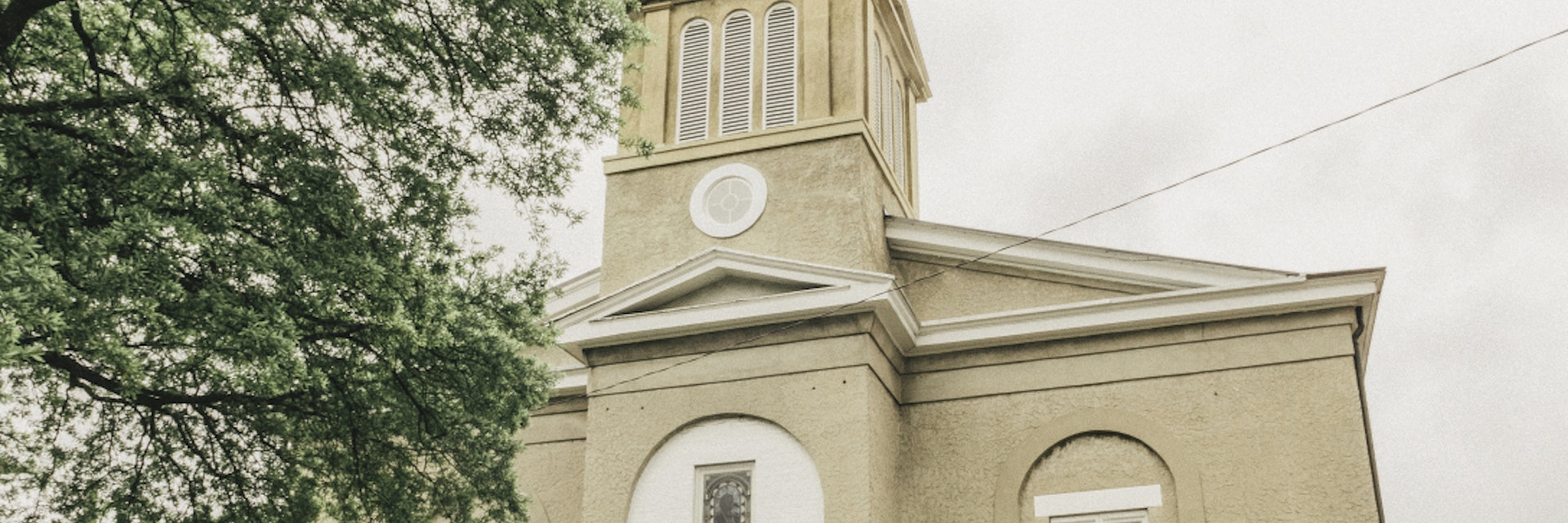
Getty Images
First African Baptist Church
Considered the oldest African American church in the country, this National Historic Landmark played a pivotal role on the Underground Railroad. Offers worship services and tours, where you can see the holes in the floorboards that enabled slaves to breathe.
23 Montgomery St
Get In Touch
912-233-6597
https://www.firstafricanbc.com
Lonely Planet's must-see attractions

Bonaventure Cemetery
Less than a 10-minute drive east of Savannah’s Historic District you’ll find one of the most peaceful, quiet, green escapes tucked away next to the…

Forsyth Park
The 33-acre Forsyth Park, Savannah’s largest, was named after Georgia’s 33rd governor John Forsyth and is home to the most famous fountain in the city…

Laurel Grove Cemetery
In a city filled with cemeteries, Laurel Grove is among the most picturesque. The Victorian-era gravesites hint at the city’s history and the lovely…
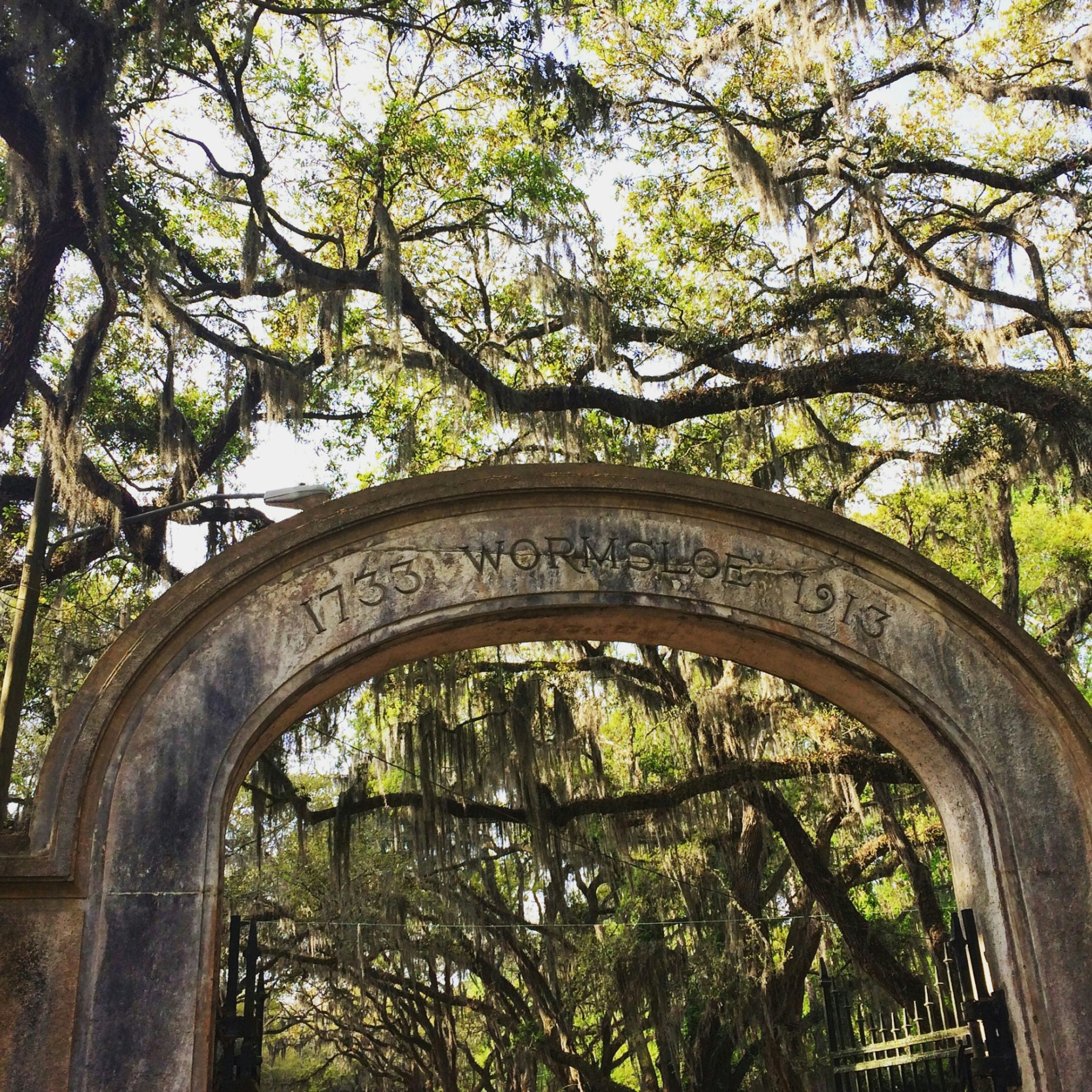
Wormsloe Historic Site
A short drive from downtown, on the beautiful Isle of Hope, this is one of the most photographed sites in town. As soon as you enter, you feel as if you…

Daufuskie Island
13.84 MILES
For those looking for an escape just a touch less discovered than Hilton Head Island, this idyllic island offers a sublime day trip and a window into the…

Little Tybee Island
15.67 MILES
This uninhabited barrier island, only accessible by boat or kayak, is just south of Tybee Island and is actually double its size. The preserved land is…
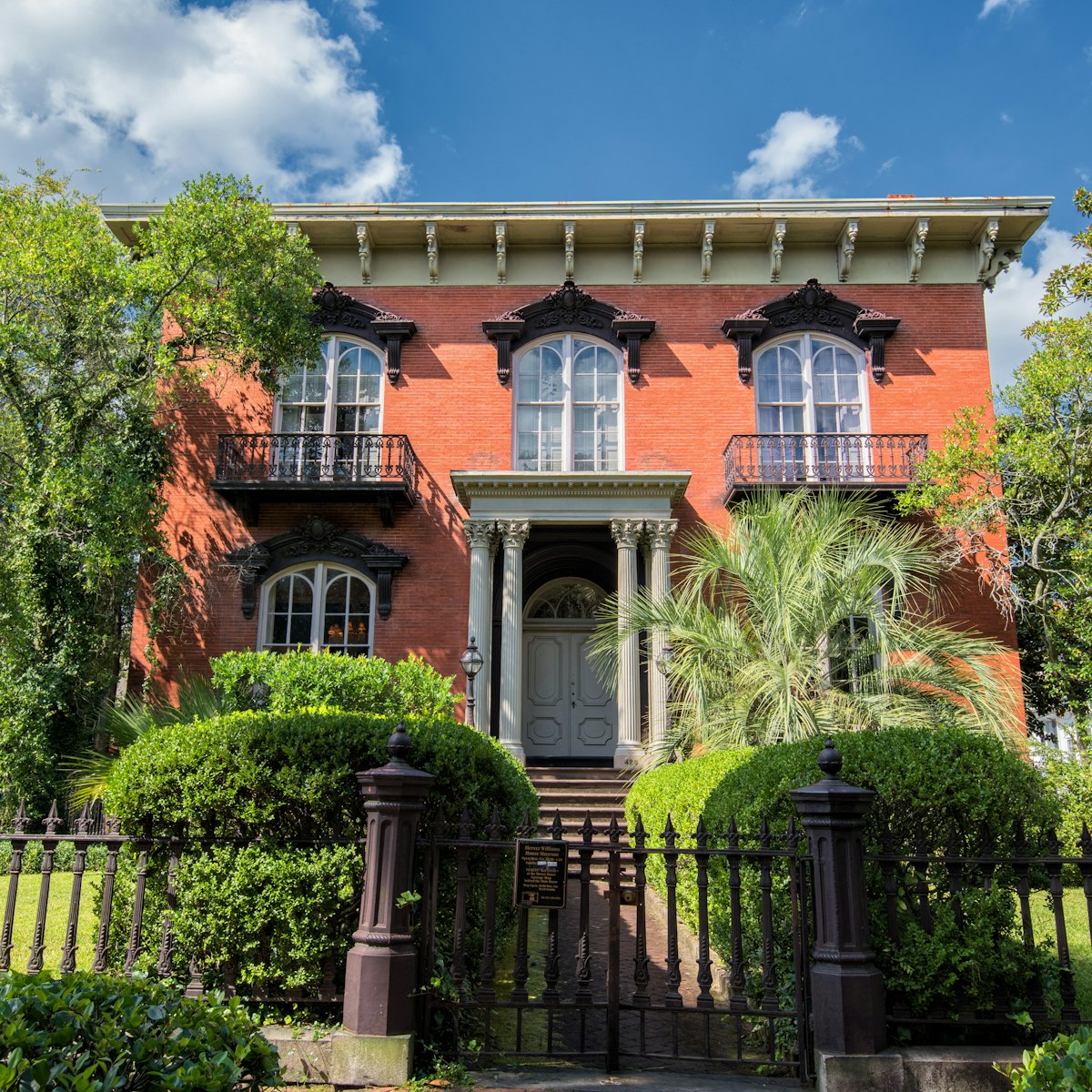
Mercer-Williams House
Although Jim Williams, the Savannah art dealer portrayed by Kevin Spacey in the film version of Midnight in the Garden of Good and Evil, died back in 1990…

North Beach
15.51 MILES
With fewer services and a vibe that feels more remote, this stretch of beach is a great place to relax. You can watch massive container ships drift in…
Nearby Savannah attractions
1 . Haitian Monument
Built to honor the 750 Haitian volunteer infantrymen – the largest unit of men of African descent – who fought in the attempt to get Savannah back from…
2 . Ships of the Sea Maritime Museum
If you're into boats or naval history, this little museum will hold a lot of interest. Located in an old Savannah mansion, there are several floors of…
3 . American Prohibition Museum
Learn about the history of Prohibition in the US in this spirited museum, the only one of its kind in the country. Exhibits feature live actors, films,…
4 . Telfair Academy
Considered Savannah's top art museum, the historic Telfair family mansion is filled with 19th-century American art and silver and a smattering of European…
5 . Jepson Center for the Arts
Designed by the great Moshe Safdie, and looking pretty darn space-age by Savannah's standards, the JCA – rather appropriately, given its architecture –…
6 . African American Monument
This solemn monument features a family of four in a close embrace, with broken shackles around their feet that represent emancipation from slavery. The…
7 . SCAD Museum of Art
Architecturally striking (but what else would you expect from this school of design?), this brick, steel, concrete and glass longhouse delivers your…
8 . Owens-Thomas House
Completed in 1819 by British architect William Jay, this gorgeous villa exemplifies English Regency–style architecture, known for its symmetry. The guided…
This site uses cookies. Opt out at any time. More details
Home › Things To Do › Tours › Black History Tours
Black History Tours, Savannah, GA

Black history tours of Savannah explore the history of the city from an African-American perspective, discussing aspects of its past often overlooked by general-interest tour companies. Walking tours, bus tours, car tours and step-on tours are available, with most led by guides who specialize in this topic.
Most tours are guided explorations of Savannah’s principal Black heritage sites and attractions, often focusing on the city’s legacy of slavery and the experiences of its large African-American population through the period of enslavement and their transition to freedom.
Occasional tours also address the culture and history of the local Geechee people, part of the Gullah-Geechee cultural corridor stretching up through coastal Georgia and South Carolina.
See also: – Savannah’s African-American history sites – Must-see sights – Events in Savannah – Trolley tours
! Please check all details before planning your trip. Availability may vary by season, and operators may withdraw or change specific tours without notice.
Black History Walking Tours In Savannah
With 40 acres and a mule.
$40 per person Private walking tour exploring Savannah’s place in the history of enslavement and freedom.
With Footprints of Savannah Walking Tours
Adults $25, children $10 Walking tour focused on the history of urban enslavement and the trade in enslaved people in Savannah.
With Journey By Faith
$25 per person Walking tour exploring the history of enslavement in Savannah.
$25 per person Customizable tour exploring your choice of Black history sites in and around Savannah.
$10 per person Group tour for students exploring the history of enslavement and the Civil War period in Savannah.
With Oh So Social Tours
$35 per person, or from $150 for 2 people for a private tour Walking tour focused on Savannah’s African-American history and culture.
With Underground Tours of Savannah
$40 per person Walking tour exploring the history of Savannah’s lost burial grounds for enslaved people and free African-Americans.
Savannah Black History Minibus Tours & Other Riding Tours
With day clean journeys.
Adults $25, children $18 Minibus tour exploring the role of African Americans in the history of Savannah and Georgia.
Adults $25, children $18 Minibus tour of Gullah-Geechee history, culture and folklore in the Savannah area.
With Freedom Trail Tours
COST Bus tour exploring Savannah’s Black history.
COST Step-on guide service specializing in Black history, but also offering historical overview tours.
With So You Never Forget Tours
$575 for up to 4 people Half-day private car or minibus sightseeing history tour of Savannah.
$750 for up to 10 people Step-on tour aboard your own vehicle focusing on Savannah’s Black history.
Single-Site African-American History Tours, Virtual Tours, Self-Guided Tours & Other Experiences
With the emory center for digital scholarship.
Free Self-guided tour of Savannah's key Black history sites, including some outside of the Historic District.
Free Self-guided tour focusing on Black history sites in Savannah's downtown Historic District.
$15 Virtual tour exploring the history of enslavement in Savannah.
LOOK UP Single-site tour exploring the history of First African Baptist Church.
$75 per person Single-location food experience featuring Gullah-Geechee cuisine and storytelling at a gospel brunch or lunch buffet.
Walking Tours
Enslavement & freedom.
Footprints of Savannah, 1hr30 . With Vaughnette Goode-Walker, Footprints of Savannah Walking Tours. Slavery and the African-American experience in Savannah. Daily, 10am. Adults $20, seniors (65+) $15, children (0-11) $7. Group tours available, $17 per person. Reservations required. Call 912-695-3872. More details
Walking Tour, 1hr30 . With Karen Wortham, Journey by Faith. Walking tour exploring the history of slavery in Savannah. Adults $18, seniors/students $15, children $10. Call 912-224-0973 for reservations or book online. More details
Slaves in the City, 1hr30 . With Underground Tours of Savannah. Private walking tour exploring the sites associated with enslaved people’s residence in Savannah. Available Tuesday-Sunday. Adults $25, children/students (9-17) $20; 6-person minimum. Call 912-547-5937 for reservations or book online. More details
“Jubilee is Here”: The Abolitionist Movement . With Underground Tours of Savannah. Private walking tour focused on the people who fought for the end of slavery. Call 912-547-5937 for information and reservations. More details
40 Acres and a Mule Tour, 2hrs15 . With 40 Acres and a Mule. Private walking tour of six downtown squares, focusing on Savannah’s history of slavery and the path into freedom. $40 per person, also available as a pay-to-view video tour. Call 912-659-4383 for reservations. More details
Follow the Drinking Gourd Tour . With Oh So Social Tours. Private walking, bus or step-on tour of the history of enslavement and freedom in Savannah and the lowcountry. Call 912-421-8664 for information and reservations or contact online. More details
Gullah-Geechee Culture
Gullah Geechee Talkin’: A Dinner Theater Celebration . With Underground Tours of Savannah. Presentation by the Saltwata Players exploring the folkways and foodways of the Gullah-Geechee people. Call 912-547-5937 for information and reservations. More details
Places Of Worship
First African Baptist Church, 1hr . With Karen Wortham, Journey by Faith. Interior tour and history of Savannah’s First African Baptist Church. $5 per person, or $4 per person for groups of 41 or more. Call 912-224-0973 for reservations or contact online. More details
Houses of Praise, Featuring First African Baptist Church . With Underground Tours of Savannah. Private walking tour focused on Savannah’s African-American places of worship. Call 912-547-5937 for information and reservations. More details
Ghost Tours
Slaves, H’aint and Boo Hags: Savannah’s African-American Haunted Ghost Tour . With Underground Tours of Savannah. Private walking ghost tour of Savannah focused on African-American ghost stories. Saturday evenings. Adults $25, children $10. 6-person minimum. Call 912-547-5937 for reservations or book online. More details
Minibus & Car Tours
African American History Tour, 1hr30-2hrs With Jamal Toure, Day Clean Journeys. Tour exploring the role of African-Americans in the history of Savannah and Georgia. Available daily, morning or afternoon. Adults $25, seniors (62+)/students $20, children (6-17) $18, young children (0-5) $10. Call 912-220-5966 or email [email protected] for reservations. More details
Drums and Spirits Folklore Tour, 1hr30-2hrs With Jamal Toure, Day Clean Journeys. Tour exploring Gullah-Geechee history and folklore. Evenings daily by request. Adults $25, seniors (62+)/students $20, children (6-17) $18, young children (0-5) $10. Call 912-220-5966 or email [email protected] for reservations. More details
Black History Tour, 2hrs . With Johnnie Brown, Freedom Trail Tours. African-American history tour. Call 912-398-2785 for information and reservations. More details
Negro Heritage Trail Tour, 1hr30 . With the King-Tisdell Cottage Foundation. Bus tour covering the history of African-Americans in Savannah from the city’s founding through the present day, based on the tour created by noted local Civil Rights leader WW Law. Available Tuesday-Saturday, morning or afternoon. Pickup available from selected downtown hotels. $20.95 per person, one child (0-9) tours for free per paying adult – includes admission to the Beach Institute. Advance reservations can be made via TourBeaver.com. Call 212-852-4822 or book online. More details
Trolley Tour, 2hr30-3hrs . With Karen Wortham, Journey by Faith. Trolley tour of African-American history sites in Savannah. $25 per person. Call 912-224-0973 for reservations or contact online. More details
Savannah African American History, 3hrs . With Bethany Campbell, So You Never Forget Tours. Private car tour (with some, minimal walking) exploring Savannah’s African-American history and the history of slavery in the city. Available daily. $425 for up to 4 people. Reservations can be made online via ToursByLocals.com. More details
Step-On Tour, 2hr30-3hrs . With Karen Wortham, Journey by Faith. Tour of African-American history sites in Savannah, in customer’s own vehicle. $10 per person. Call 912-224-0973 for reservations or contact online. More details
Step-on Savannah African American Bus Tour, 2hrs . With Bethany Campbell, So You Never Forget Tours. Step-on tour in customer’s own vehicle exploring Savannah’s African-American history and the history of slavery in the city. Available daily. $525 for up to 10 people. Reservations can be made online via ToursByLocals.com. More details
More Black History Sites In Savannah, GA
– First African Baptist Church – The African-American Monument – The Haitian Monument – Pin Point Heritage Museum – Ralph Mark Gilbert Civil Rights Museum – Beach Institute African American Cultural Center – Laurel Grove South Cemetery – Owens-Thomas House and Slave Quarters
See also: – Sapelo Island tours – Ossabaw Island tours – Savannah events – Art galleries
© Melanie K Jones 2024


First African Baptist Church
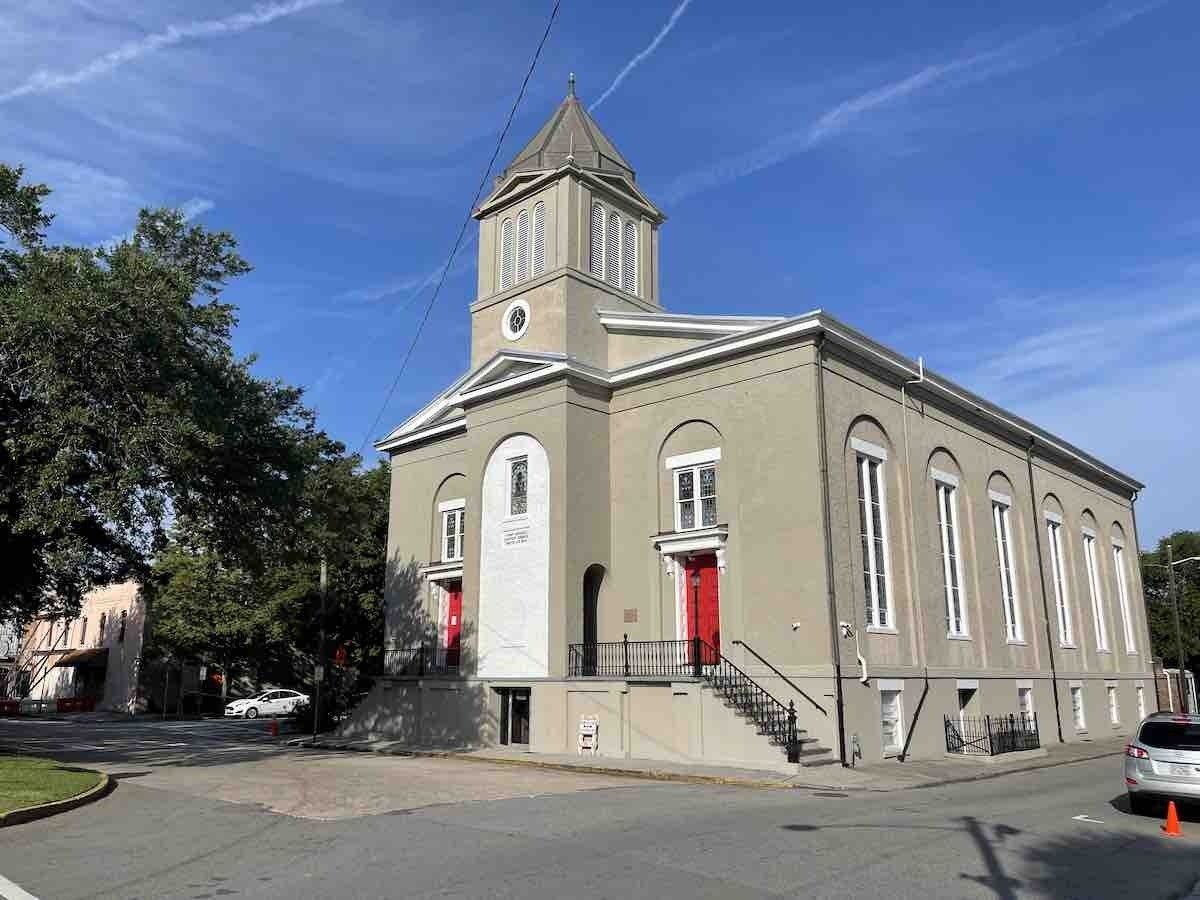
photo by Shannon Burns, Copyright 2021
The First African Baptist Church in Savannah, Georgia is a vibrant Christian church with an incredible history. While the current pastor, Reverend Thurmond N. Tillman, guides his flock and nourishes their spiritual needs in the modern world, the congregation looks back on its rich history and eagerly educates visitors about the past. Tours are offered to tell the story of how the congregation came into existence in the the late 1700s and all that has been experienced since those early days.
Originally named First Colored Baptist, the church was renamed First African Baptist and it is where the first black Sunday school class in North America was taught. From the exterior, the church looks smaller than inside. Standing in Franklin Square today and looking across Montgomery Street, you’ll see the current structure that was built in 1859.
Both the main sanctuary and the balcony are available for touring. Anyone with an appreciation for American history in the south, Christian history in the U.S.A. or African American history will be enlightened and inspired with a visit to First African Baptist Church in Savannah with its well preserved artifacts. Among the historical pieces maintained inside the church to this day are many of the light fixtures which have been present since the middle of the 19th century, although they were converted from gas to electric at some later time. The organ was placed up in the balcony in 1888 where it remains today holding the distinction of being the oldest pipe organ in the State of Georgia. Also in the balcony, you’ll find wooden pews that have remained since their placement. Constructed by slaves, the pews feature inscriptions in an African dialect. It is quite an experience to sit on those pews built by slaves inside the oldest black church in America.
Seventeen men have led the First African Baptist Church. The congregation has depended on their leadership and guidance over the centuries. The church pays homage to several former pastors in a very special way — with their images captured in stained glass. The very first pastor, George Leile is honored with placement in a special stained glass window visible when standing outside the front of the church. At the front of the church, behind where Rev. Tillman preaches today, are the images of six more preachers who led this historic group of believers.
While George Leile was pastor of First African Baptist, he traveled to Jamaica as a missionary earning him the distinction of being both the first missionary from America to travel to a foreign land for the sake of the Gospel and the first Baptist missionary to Jamaica. Taking over in 1788, Andrew Bryan was a former slave who became the successor of Leile as pastor.
The third leader of First African Baptist, Reverend Andrew Cox Marshall, holds the distinction of being the longest serving pastor (serving from 1812-1856) until his death at nearly one hundred years (reports on his age vary, but he’s believed to have been between 95 & 100). Pastor Marshall was a slave for many decades before eventually buying his freedom. He was born as the son of a slave girl and a white father who was likely the supervisor of a slave plantation. The church experienced more than 60% growth during his four decade tenure with more than 2,500 families registered as members at the time of his death.
After the death of Marshall, the Rev William J. Campbell became the fourth pastor. His tenure of two decades included the critical time of constructing the new church building — the one that remains to this day. Obviously, Rev. Campbell did his job very well. The only major setback to the church building since those times was to the original church steeple which was damaged in the late 1800s by a hurricane. The fifth pastor, Reverend George Gibbons, led the church for six years (1878-1884) during the time of the installation of the stained glass windows
During the last fifteen years of the 19th century, First African Baptist was led by the Reverend Emmanuel King Love. Many additions to the church were made during his watch including the baptismal pool. This is also the time frame when the pipe organ, which was already more than a half-century old at the time, was placed up into the balcony. Rev. Love was more than just a preacher, though. He desired improvements in education for his people and his leadership was critical in the establishment of several all-black colleges in Georgia including Savannah State College, Morehouse College (in Atlanta) and Paine College (in Augusta, GA).
Just after the turn of the century, it was time for another page in the history of First African Baptist. Reverened James Wesley Carr officially succeeded the popular Pastor Love in 1901. His tenure would be shorter (just six years), but the church moved forward with his stewardship as the sturdy oak pews were placed into the sanctuary in his era. Electricity came to the church as well under Rev. Carr.
All of the church debts were retired in the years of its eighth pastor, Willis Jones. Reverends T.J. Goodalls, Edgar Thomas, Mack Williams and J. Alfred Wilson would guide the church through the early parts of the 20th century until Ralph Mark Gilbert became pastor in 1939. The name may sound familiar if you’ve toured the museums of Savannah. One of them is named for him — The Ralph Mark Gilbert Civil Rights Museum .
Pastor Gilbert loved his flock and believed that all of God’s children were created equally. While serving as the local president of the NAACP, he demonstrated courageousness while endeavoring towards integration of the local police department. He’s considered one of the greatest leaders of the civil rights movement from the south.
The push for desegregation continued to be a dream for those who came after Reverend Gilbert. Assuming the leadership of the church in 1957, Curtis Jackson focused on desecrating Savannah area school and he led many non-violent demonstrations. Civil Rights leaders recognized the work that was being done in Savannah and Martin Luther King, Jr. even visited First African Baptist on his visit to Savannah delivering a speech that many of the themes he would later give in the infamous “I Have a Dream Speech.”
The later-half of the 1960s, while William Franklin Stokes was pastor, it became a lot more comfortable to worship at First African Baptist as air conditioning was installed for the first time. Understanding the the church’s story was unique in America, a permanent museum space was created by Pastor Lawrence McKinney during the 1970s.
Currently, Reverend Thurmond N. Tillman serves as the 17th pastor of the church (since 1982). He’s achieved the second longest pastorate with three decades of service — though, it is still significantly shorter than the 44 years Rev. Marshall performed in the 1800s. It would take another dozen years or so for Rev. Tillman to become the longest serving pastor of this amazing congregation. Will Pastor Tillman reach that milestone? If the Lord wills it!
History shows the God has blessed and protected this wonderful church. He sends pastors with the leadership skills suited to the times to guide this flock. Pastor Tillman and his congregation are grateful to worship in such a historic building and they invite you to discover history at First African Baptist Church in Historic Savannah, Georgia.
This article was first published in 2013.
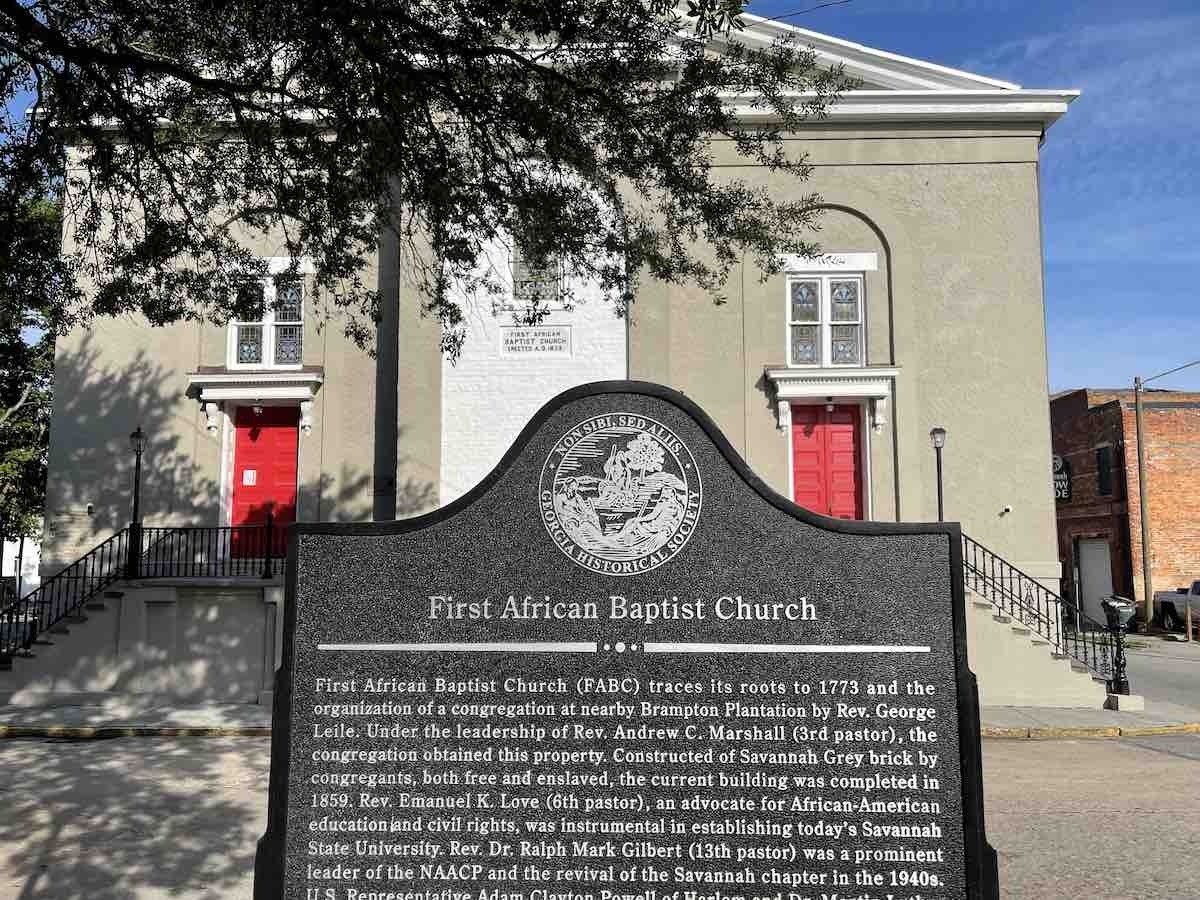
Other Historic Christian Churches in Historic Savannah
Cathedral of St. John the Baptist on Lafayette Square
Christ Church on Johnson Square
First Baptist Church on Chippewa Square
Independent Presbyterian Church
Second African Baptist Church
Other Savannah Attractions
River street, forsyth park.

Privacy Policy
2003-2022 | OfficialSavanahguide.com | All Rights Reserved.

Savannah First-Timer's Guide
Plan the Perfect Trip to Savannah
Black History Tours Savannah: Which Ones Are Best?
- THINGS TO DO
- 16 Comments
- by Erin Clarkson
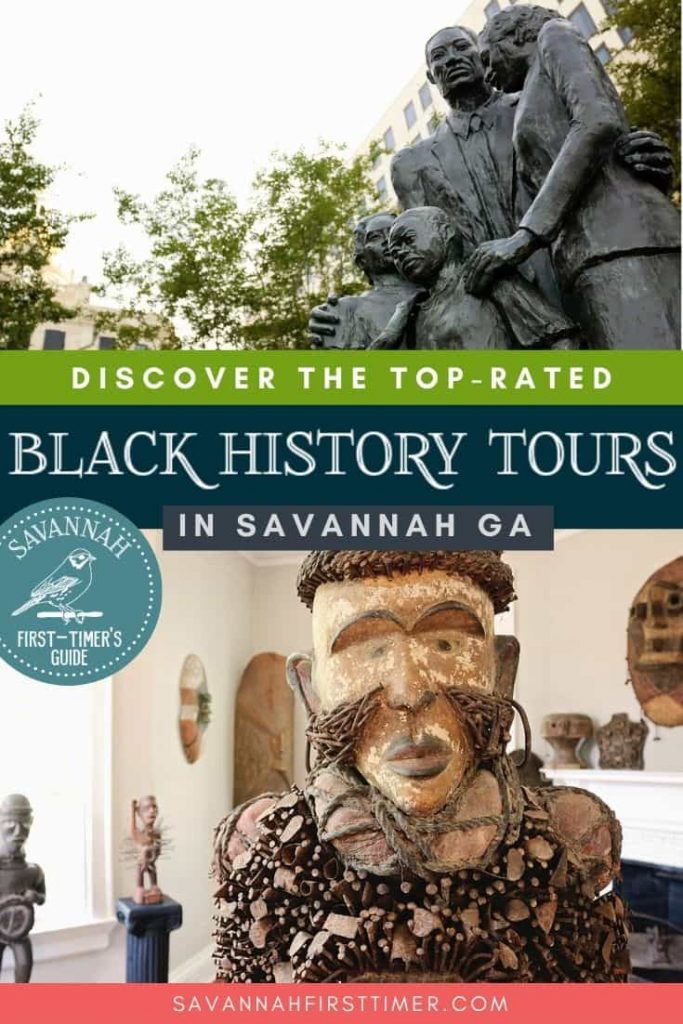
Savannah is a beautiful city with such a complicated history. A good portion of the Historic District was built by enslaved men and women, and — to truly appreciate its beauty — it’s important to acknowledge how the city came to be.
With that in mind, here are some of the best Black history tours in Savannah , with a focus on the ones that make every attempt to get the details right.
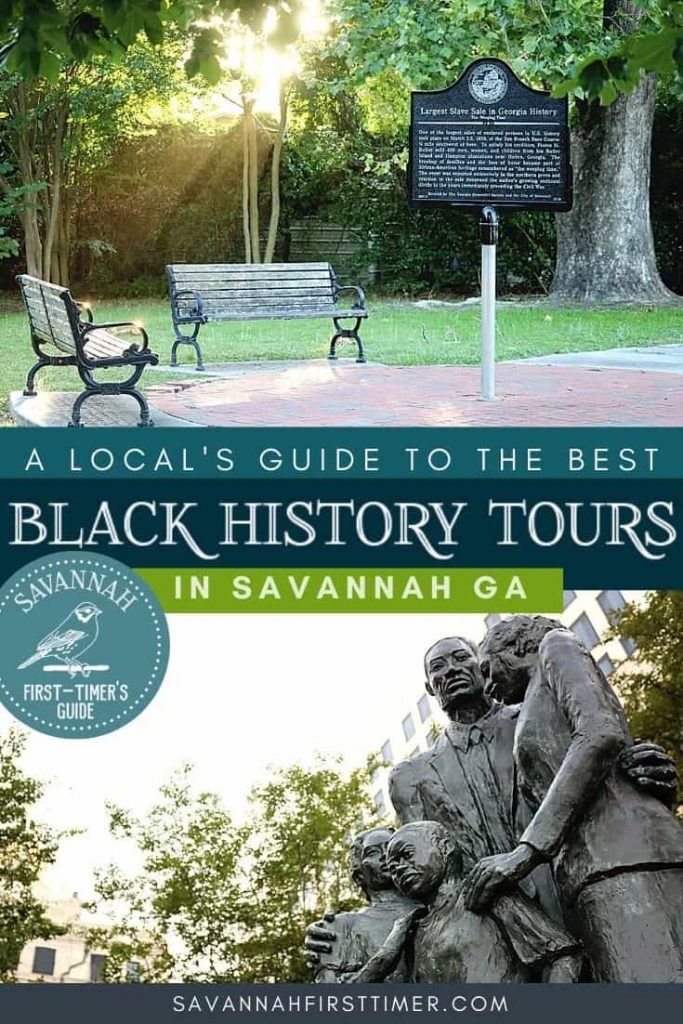
Note: This guide contains affiliate links to my trusted travel partners.
If you’re new around here, first of all… allow me to extend a warm welcome!
My name is Erin, and I authored the Savannah First-Timer’s Guide . It combines my top Savannah travel tips from this website into one handy downloadable guide.
Table of Contents
Black History Tours in Savannah GA
If you’re wondering why you should schedule a Black history tour when you visit Savannah, it’s because it will help you to better understand the complex dynamics of the city.
The tours I’m recommending below are informative ones that will help you learn more about the collective contributions from the Black community — both enslaved and freed.
In a hurry? Here is my top recommendation: ➡️ From Slavery to Freedom Tour You might also be interested in reading: ➡️ A Local’s Guide to the Best Things To Do in Savannah, Georgia ➡️ Savannah Must-See Spots for First-Time Visitors
Pin Point Heritage Museum
Pin Point has long been one of my favorite tours in Savannah! It’s one of the “must see” spots I recommend anytime I have friends or family in town for a visit, and it’s one of the Top 10 attractions listed in my Savannah travel guide .
Y’all, this tour is SO GOOD, so informative, and 100% worth a visit!
The community of Pin Point was established back in 1896. It was founded by descendants of the enslaved men and women who arrived in Savannah from Central and West Africa via the Transatlantic Trade Route.
Those original founders purchased slivers of land along the marsh just south of Savannah and formed the small, self-sustaining community known as Pin Point.
Their main source of income was the A.S. Varn and Sons Oyster Factory, which currently operates as Pin Point Museum.
The tight-knit community was known for their crabbing, shrimping, and oyster harvesting operations. Some of their oyster products were even served at the White House!
Descendants of the original landowners will show you around the former oyster factory while teaching about the beautiful philosophy of the Gullah Geechee people — which is essentially to live off the land and seek only what you need, versus chasing after “wants”.
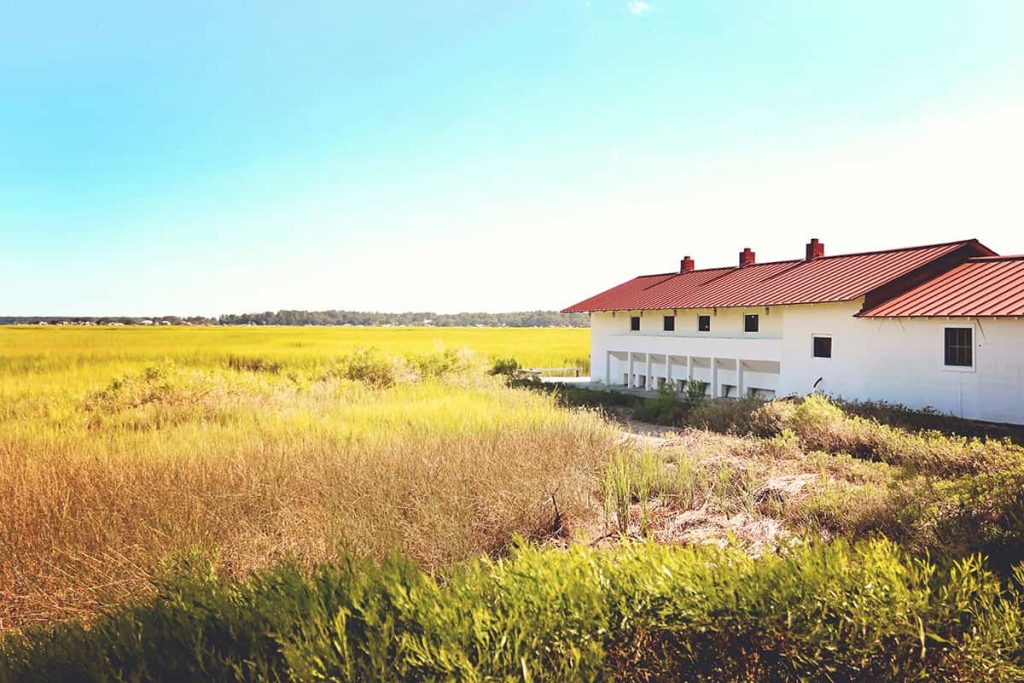
The site is run by the Coastal Heritage Society, and there are learning stations set up throughout the museum.
You can do a self-guided tour, but it’s much better to go on a guided one.
Why It’s Worth Visiting
In addition to being one of the best places in Savannah to learn about the Gullah Geechee culture, Pin Point is also a stunningly beautiful property.
The sunset views from there and nearby Butter Bean Beach are spectacular!
Depending on who you have as your guide, you might learn some of the Gullah language and even a few celebratory dance moves while you’re there.
If Gail Smith is available, I highly recommend requesting her to show you around!
Know Before You Go
- Website: Pin Point Heritage Museum
- Location: 9924 Pin Point Avenue, Savannah, GA 31401
- Tickets: From $5 – $9
- Parking: Their on-site parking lot fits approximately 15 to 20 vehicles
- Time to Allot: Plan on spending two hours at the site
- Note: You’ll need transportation to get to Pin Point from the Historic District
Local Insight: Pin Point is known for being the birthplace of U.S. Supreme Court Justice Clarence Thomas.
FAQ: What Does Gullah Geechee Mean?
Gullah Geechee is a term you’ll hear frequently in Savannah.
The Gullah Geechee people are descendants of West Africans who were enslaved, brought to the U.S., and forced to work on rice, cotton, and indigo plantations throughout the Coastal Empire and the Lowcountry — like the Sea Island cotton plantations on Cumberland Island , for example.
Islanders in the lower region of South Carolina are usually considered Gullah, while Georgians are referred to as Geechee.
“Gullah Geechee” is a sweeping term that encompasses the two. The local dialect is also sometimes referred to as Gullah.
The Gullah Geechee Historical Corridor was established by Congress in 2006 as a National Heritage Area and covers coastal regions in Florida, Georgia, South Carolina, and North Carolina.
Owens-Thomas House
The Owens-Thomas House and Slave Quarters is where you’ll best see the stark contrast between Savannah’s “haves” and “have nots”.
The main home, circa 1819, was designed by architect William Jay — the architect for many of Savannah’s notable buildings — and was built in the Regency style.
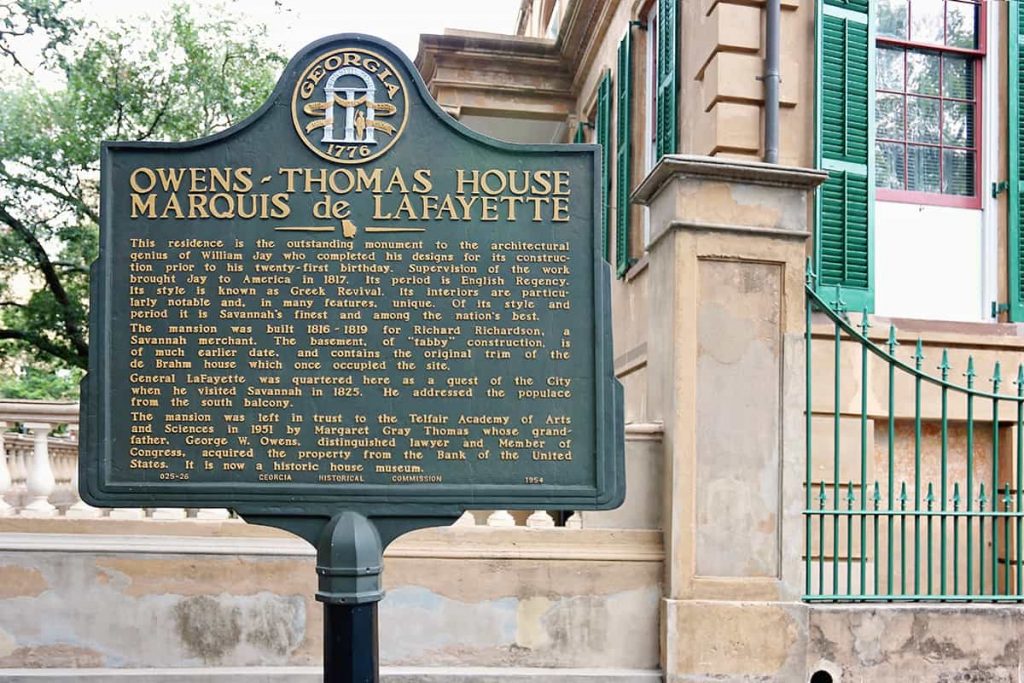
Before touring the mansion, you’ll walk through a small welcome center where you can watch educational videos pertinent to the time period.
The home is listed on the National Register of Historic Places.
The back wall of the welcome center honors enslaved individuals who worked in the home.
It’s a very simple wall covered in names and blank boards representing those whose names could not be retrieved, but it’s particularly memorable.
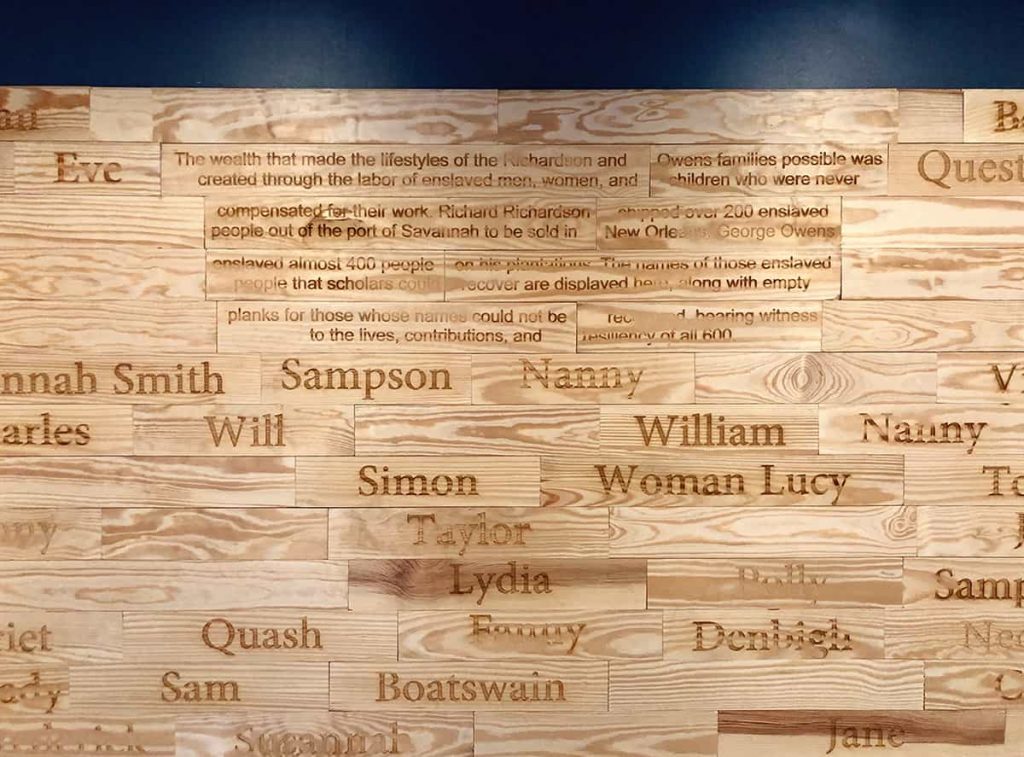
Next, you’ll enter the area where enslaved families resided and will learn what life was like for the men and women who worked inside the home.
Those families were essentially on call 24/7 and worked under the constant scrutiny of the homeowners. They tended to the every need of their enslavers.
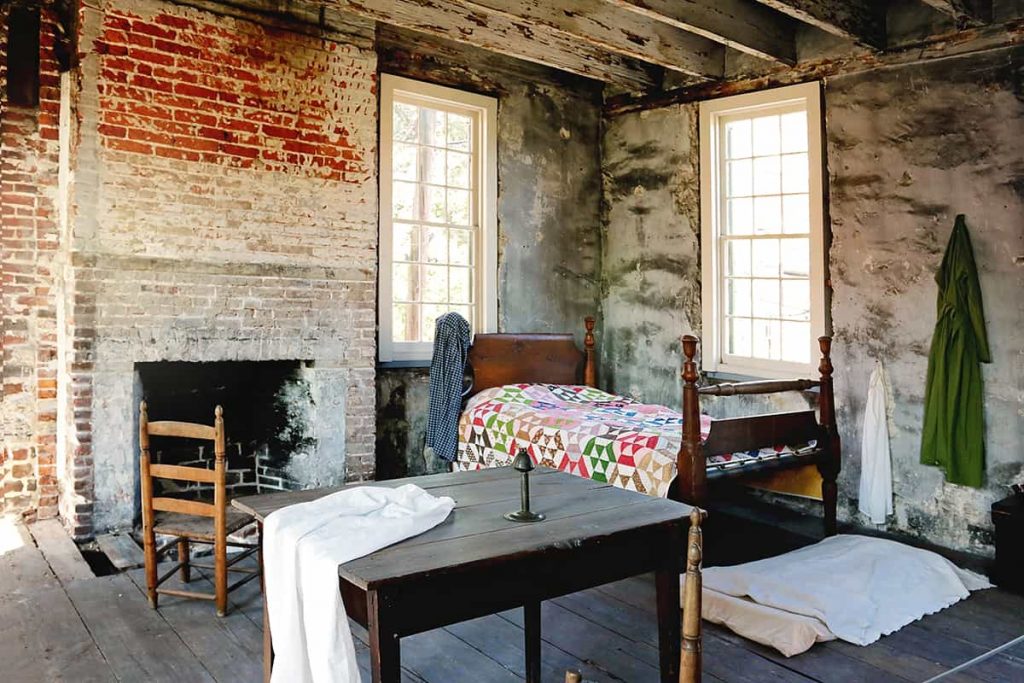
On the flip side, once you enter the main house, you’ll see how some of the wealthiest members of Savannah society lived in the early to mid 1800s.
It’s quite a stark contrast!
The home was clearly designed to entertain and is filled with collectibles and state-of-the-art amenities.
It even had plumbing on all three floors during a time period when employees at the White House were still carrying buckets of boiling water up the stairs for presidential families to use for bathing.
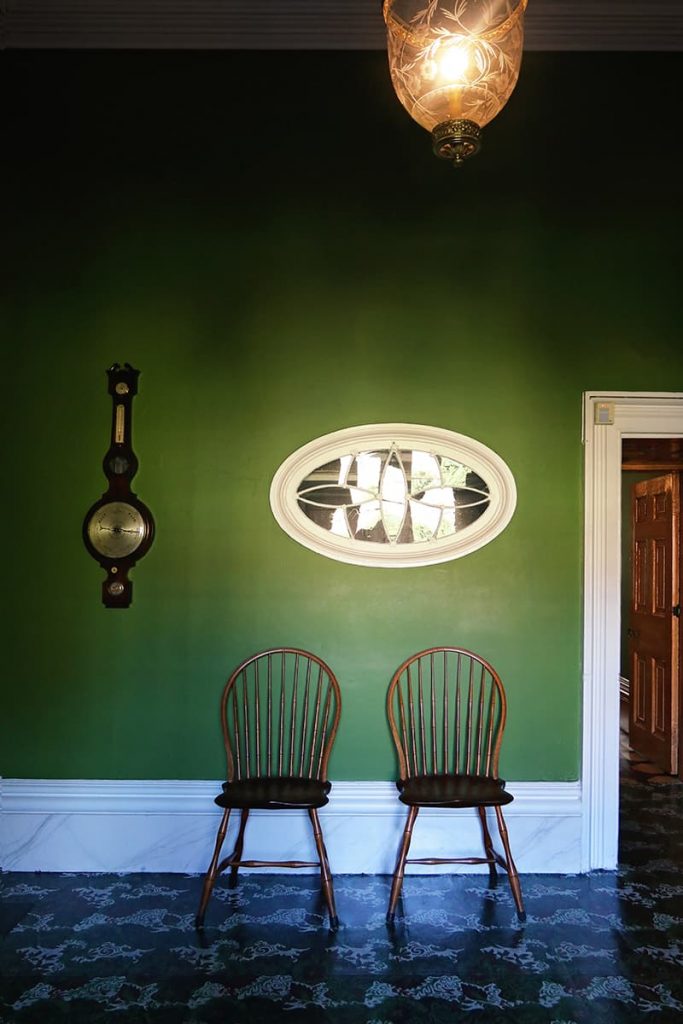
The entire house is fascinating, but I usually spend the majority of my time in the carriage house and the basement area, which is in near original condition.
The basement is where enslaved children were tasked with boiling huge pots of water over the fireplace, which they then poured into large containers that were used for laundry.
The children regularly dealt with scalding hot water and harmful substances, such as lye.
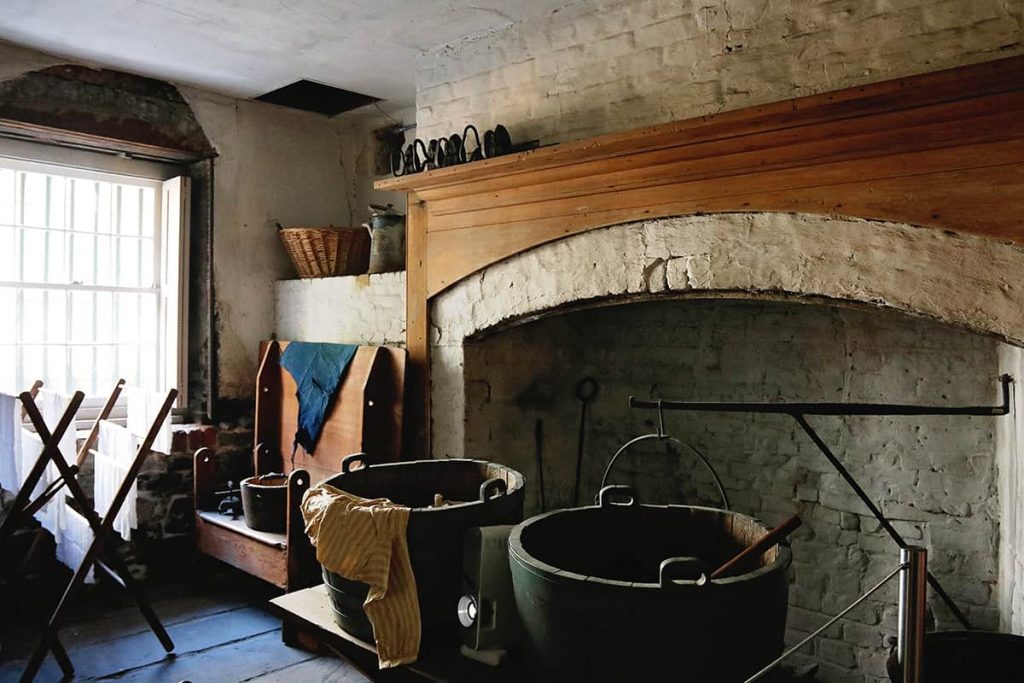
Both the Owens-Thomas house and the area that housed enslaved families are extraordinarily well-preserved.
In some areas of the main home, sections of the floors have been replaced with glass so you can see how the advanced plumbing system worked.
There’s ample signage throughout the home explaining how each area functioned.
If you want to learn what life was like for both wealthy and enslaved Southerners during pre-Civil War times, the Owens-Thomas House and Slave Quarters is one of the more “complete picture” educational tours you can take in Savannah.
Whenever I tour this house, I’m reminded that the early success of this city (and much of the Deep South, in general) was only made possible through the arduous work of enslaved laborers.
It’s a regrettable time in our country’s history, but it’s one that needs to be remembered so it won’t be repeated.
- Website: Owens-Thomas House and Slave Quarters
- Location: 124 Abercorn Street, Savannah, GA 31401
- Tickets: The $20 ticket is a 3-for-1 fee that also grants entry to nearby Telfair Academy and Jepson Center for the Arts. Pay close attention to the instructions that come with your tickets, as you’ll need to stop by in-person to reserve a time slot for your tour.
- Parking: Street parking in the immediate area is metered.
- Time to Allot: The self-guided audio portion of the tour only takes about 45 minutes, but you can explore the basement on your own and it’s filled with treasures. Plan to spend another 30 minutes or so there.
Local Insight: The upper level of the interior of the main house has a very unique indoor bridge, and the ceiling in the slave quarters still shows remnants of the original “haint blue” paint, which was made from indigo dye. The Marquis de Lafayette once stayed in the home and gave a speech from one of the balconies.
FAQ: What is Urban Slavery?
Savannah’s plantation owners usually resided in town — not in fancy plantation homes like you see in Gone With the Wind and similar movies. They hired overseers to run their plantation properties, which were located in marshy areas on the outskirts of Savannah.
The plantations often had unsanitary conditions, and it was all too easy to catch malaria in the rice fields, so for those reasons the property owners preferred to live in town.
Enslaved men and women often lived inside their enslaver’s urban homes and labored daily to keep the property running smoothly.
The concept is referred to as urban slavery, and it’s what you’ll learn about during the Owens-Thomas House and Slave Quarters tour.
First African Baptist Church Savannah
First African Baptist Church is yet another of my all-around favorite tours in Savannah.
It’s amazing how much information the guides pack into a relatively short time frame. Ninety minutes pass all too quickly, and — if you’re anything like me — you’ll find yourself wishing it lasted longer!
The FABC congregation first organized in 1733, and the building is a registered National Historic Landmark.
The tour focuses on notable pastors who served the church through the years, architectural features of the building, and the church’s important role in the Underground Railroad.
You’ll learn about the many hidden symbols found throughout the church and can even see where holes were punched into the floorboards on the lowest level of the building to circulate air for those hiding below.
The entire church was a labor of love that was constructed at odd times — often at night — by enslaved workers whenever they could manage to find free moments of time.
I don’t want to share too much, because I want you to go and experience this tour for yourself!
The oldest black congregation in North America began in 1773. May 20, 1775 the church was born with Rev. George Leile as its pastor; and constituted January 20, 1788 with Rev. Andrew Bryan, Pastor. The First African Baptist Church North America – Historic plaque by the front door
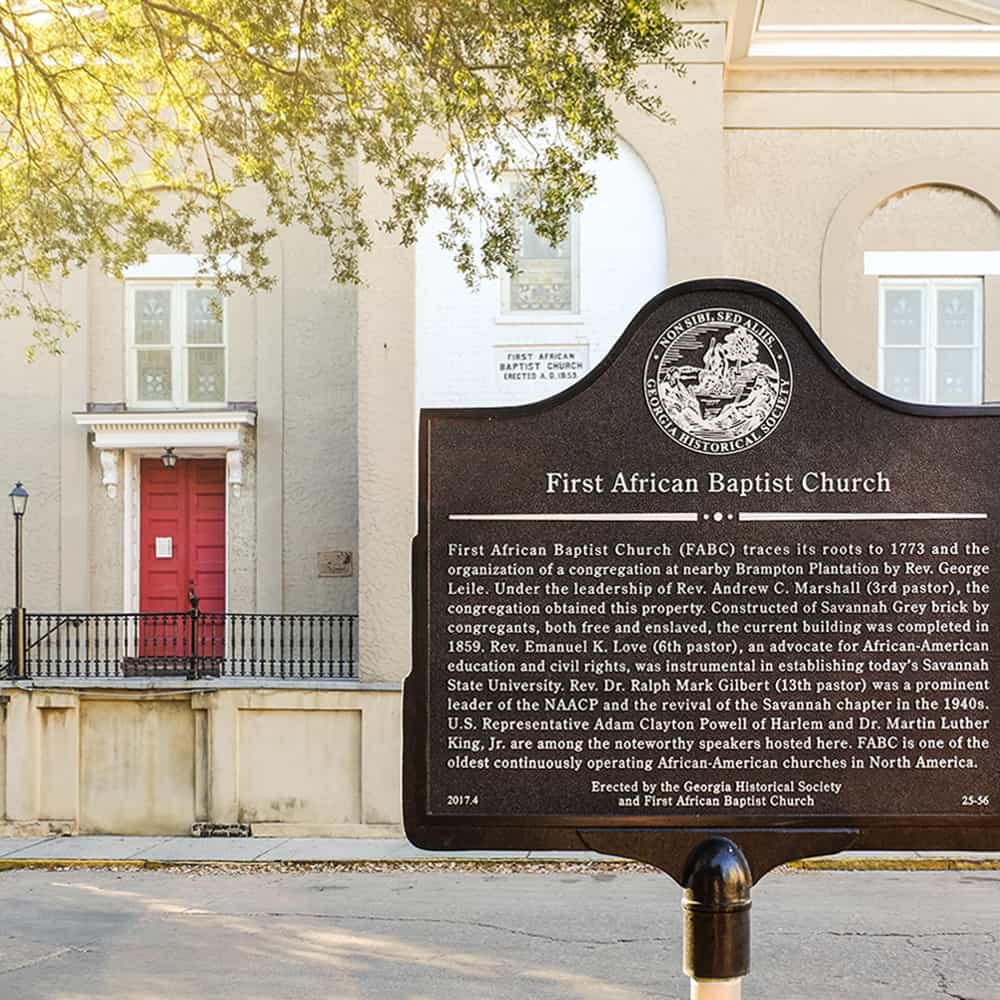
This is truly one of the most fascinating tours you can do in Savannah!
It’s another that repeatedly makes the cut as one of the top ten tours in my Savannah First-Timer’s Guide , and it’s one I practically insist on whenever I have friends or family in town for a visit.
The church has an archives room that contains a treasure trove of information about Savannah. I’d spend days in there if I could.
Guests are allowed inside the archives room, but you aren’t allowed to take pictures in that particular area.
- Website: First African Baptist Church
- Location: 23 Montgomery Street, Savannah, GA 31401
- Tickets: $12 – 15
- Parking: The church owns a private lot at the corner of Montgomery and W Bryan Streets where you can park for approximately $10 . The funds go into a work rehabilitation program for otherwise unemployable individuals. You’ll also find metered parking in the immediate vicinity.
- Time to Allot: Depending on the size of the tour group and how many questions people ask, the tour runs between an hour to an hour-and-a-half.
Local Insight: Most of the lighting fixtures in the sanctuary are original to the church. They’ve since been converted to electric, but were originally gas fixtures.
The Beach Institute
The Beach Institute is part of the King-Tisdell Cottage Foundation, which is dedicated to preserving African American history.
It’s officially recognized as the first school in Savannah specifically created to educate African American children after Emancipation.
The school opened in 1867 with a tuition of $1.00 per month.
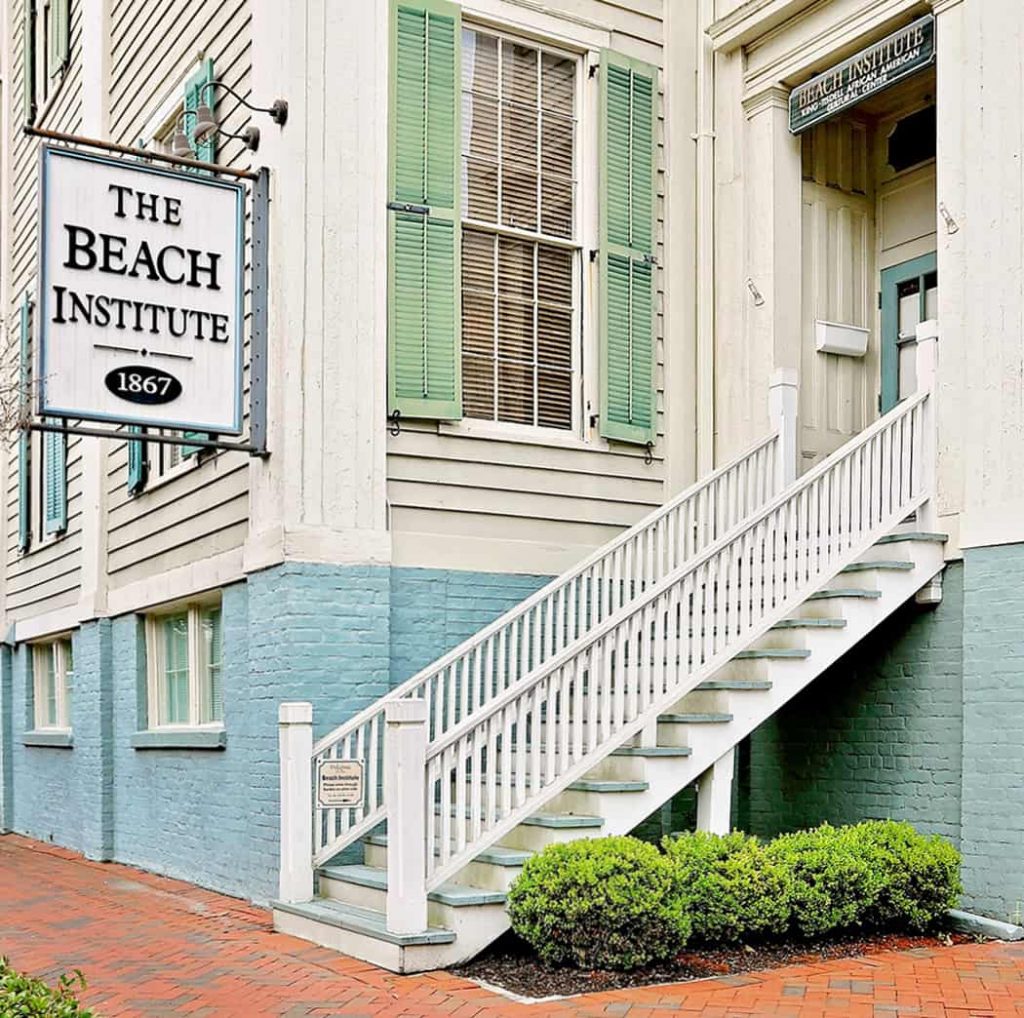
A visit to The Beach Institute is a must for any art or architecture lover.
This former school house hosts permanent and rotating exhibits featuring Black artists. You’ll find sculptures, contemporary art, and thought-provoking creations by local artists in the Savannah-Chatham public schools system.
My favorite exhibit features works by local sculptor Ulysses Davis.
Mr. Davis grew up in Savannah and was somewhat of a local legend. He taught himself to whittle and spent his free time carving small works of art.
He even created his own carving tools, which are on display in the museum.
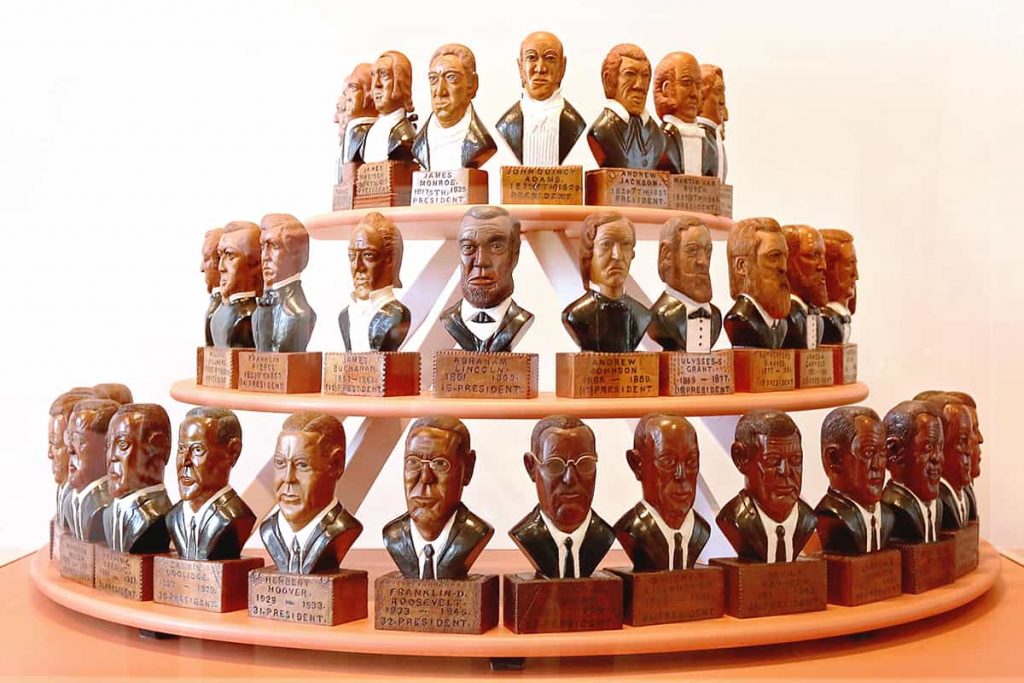
When he was in his forties, Davis opened a barber shop. He displayed his carvings on the interior and exterior of the shop, which was located near Bull and 45th Streets.
Unfortunately, the barbershop is long gone, but the original screen door has been preserved inside the museum.
Guests can also see a recreation of the shop’s interior.
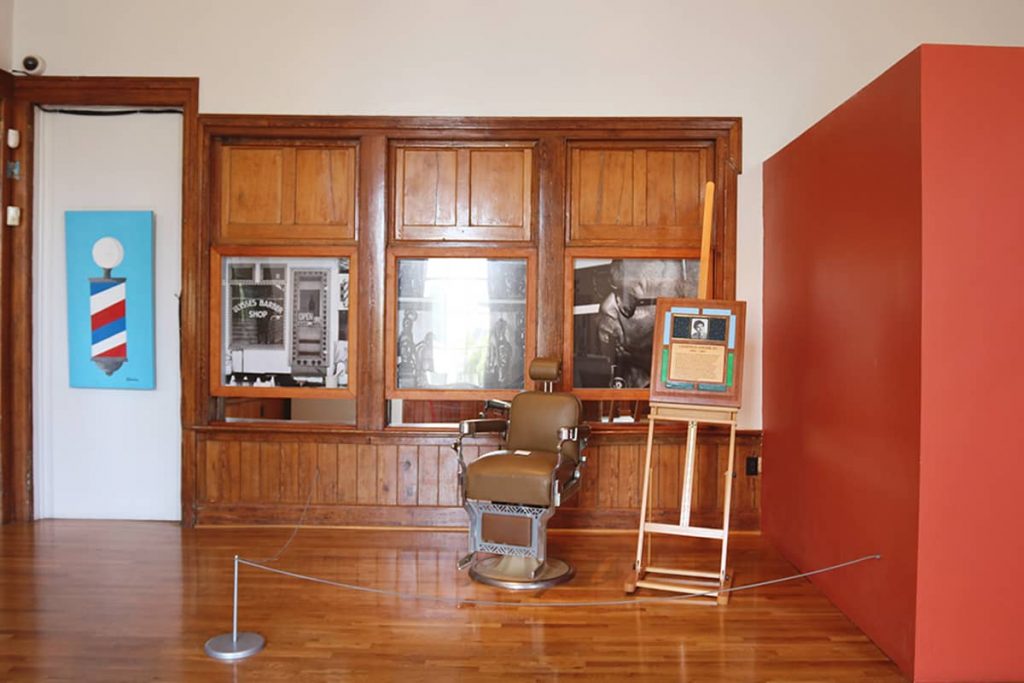
I’m not a very emotional person by nature, but some of the artwork in the rotating exhibits got me a little teary-eyed.
I could sense the raw emotion in many of the pieces — especially in some of the Black Lives Matter displays done by local high school students.
It’s easy to sense the anguish teens are feeling in light of current events in Georgia — particularly the Ahmaud Arbery case.
Emotional moments aside, the carvings by Mr. Davis are a local treasure.
National museums competed for the right to own his works, but the family accepted a lower bid in order to keep the collection intact in Savannah — knowing that’s what Davis himself would’ve wanted.
The museum is primarily self-guided, but there are times when docents are available to answer questions.
I was lucky enough to be able to speak with native Savannahian named Leitha (I didn’t get her last name) during my time in the museum, and she was very knowledgeable about Davis’ creations.
- Website: The Beach Institute & King Tisdell Cottage
- Location: 502 E Harris Street, Savannah, GA 31401
- Tickets: From $7 – $10
- Parking: Street parking in the immediate area is free.
- Time to Allot: Plan to spend 30 to 45 minutes on site.
Local Insight: The architecture of this building is quite impressive. Wait until you see how tall the windows and doors are on the upper two levels!
King-Tisdell Cottage
This beautiful Victorian-style cottage was built in 1896 and was originally located on Ott Street.
It was owned by an African American couple named Eugene and Sara King and later by Mrs. King and her second husband, Robert Tisdell.
The Kings and Tisdells were entrepreneurs and prominent members of the Savannah community. Mrs. King ran a confectionary out of the house.
If you love history, then you’ll enjoy visiting this cottage.
It’s currently the only African American historic home available for touring in Savannah.
While it’s not as fancy as some of the other homes you can tour in Savannah, you’ll learn fascinating stories about the lives of working class Savannahians.
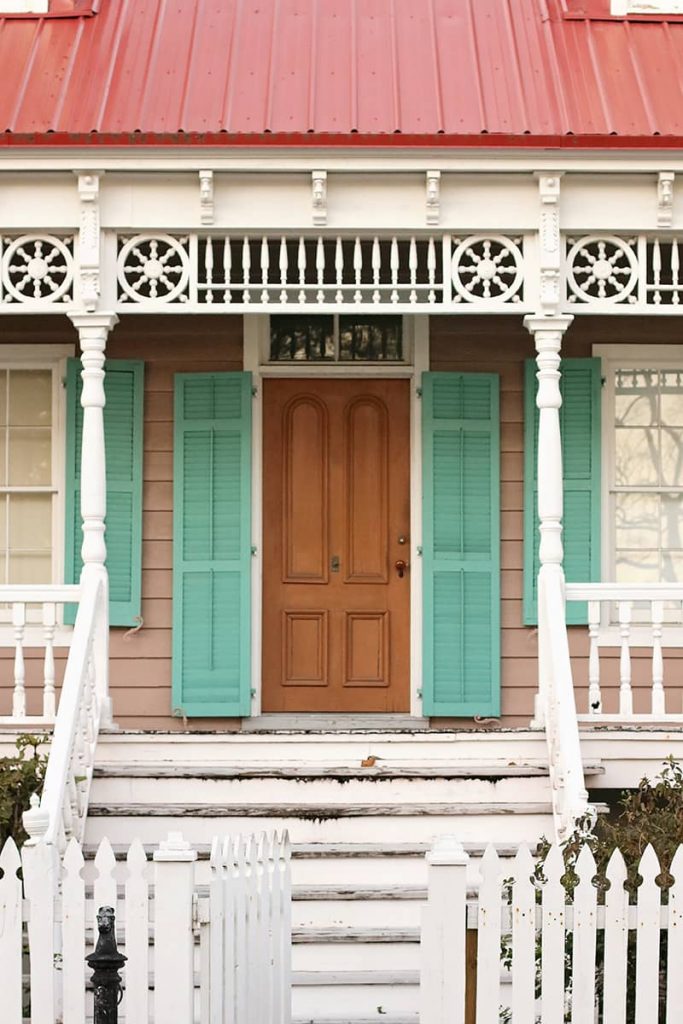
This house contains one of the best public displays of collections from Westley Wallace Law (W.W. Law), local historian and former head of the NAACP in Savannah.
He collected thousands of photographs documenting the lives of African Americans in Savannah, and one full room in the home is dedicated to his findings.
- Location: 514 E Huntingdon Street, Savannah, Ga 31401
Savannah African Art Museum
Founded in 2016, this museum in relatively new to Savannah.
It’s located inside a beautiful historic home on 37th Street and is filled with artifacts from the collection of Mr. Donald Kole.
Most of the pieces showcased within are ceremonial and spiritual items from West and Central Africa.
There are items from 28 different African countries and 180 unique cultures — some permanent and some in rotating collections.
The 1st floor houses objects from West Africa and the 2nd floor covers Central Africa.
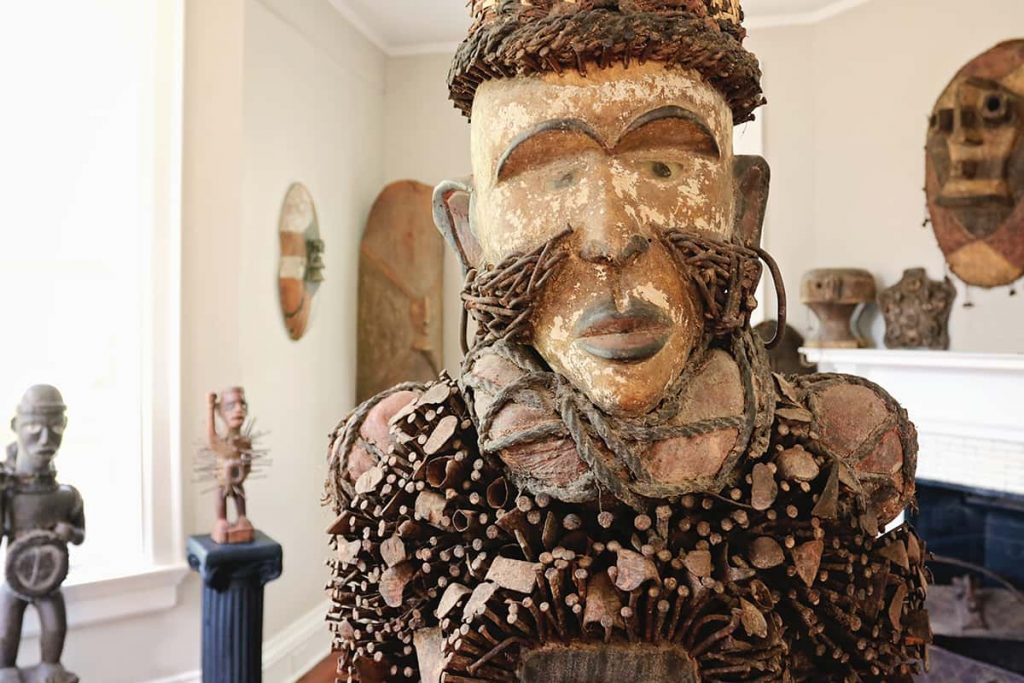
In touring the museum, you’ll learn about the various roles masks, garments, and costumes played in secret societies throughout African culture.
Most items are carved from wood or made of metal, but there are a few samples of pottery and ceramics also on display.
For example, a recent rotating exhibit called “ROOTS: History | Hair | Culture” focused on the cultural significance of African hairstyles throughout history.
Countless American families descended from men and women who arrived in this country from Africa via the Transatlantic Trade Route.
Those families were forced to leave their possessions — and much of their cultural heritage — behind.
This museum contains an incredibly diverse collection of art from many of those African countries. It’s a place where descendants of enslaved families can go to learn more about their heritage.
The museum operates as a non-profit and is completely FREE to the public. It’s a true hidden gem and an incredible gift to anyone who lives in — or visits — Savannah.
My tour guide was Billie Stultz, a recent SCAD graduate and Executive Director of the museum. She’s definitely a walking encyclopedia on the topic of African traditions!
- Website: Savannah African Art Museum
- Location: 201 E 37th Street, Savannah, GA 31401
- Tickets: FREE (you can make donations, if moved to do so)
- Parking: Street parking in the immediate area is free, and there’s also a small off-street parking lot.
- Time to Allot: The guided tour takes approximately one hour.
African American Monument Savannah
This monument in downtown Savannah is located on River Street and depicts an enslaved family who has just been freed.
Their faces are solemn, and the remnants of a broken chain lies at their feet.
It was the first monument in the Historic District to publicly acknowledge the City of Savannah’s role in the institution of slavery — an admission that didn’t come until the early 2000’s.
The monument almost wasn’t approved, since Maya Angelou’s quote at the base of the statue was considered too controversial for the tourism-driven city of Savannah.
Ms. Angelou amended her quote with one additional line at the end, and it was approved after that final addition.
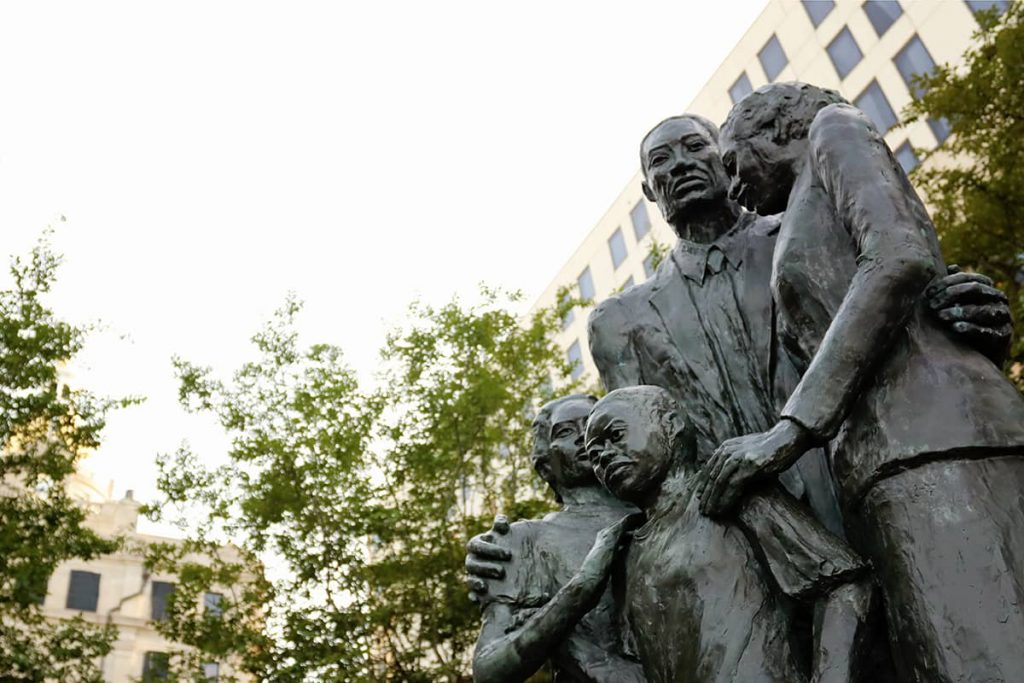
We were stolen, sold and bought together from the African continent. We got on the slave ships together. We lay back to belly in the holds of the slave ships in each others’ excrement and urine together, sometimes died together, and our lifeless bodies thrown overboard together. Today we are standing up together, with faith and even some joy. Maya Angelou – The African American Monument
River Street isn’t just a place to stroll around with a to go cup on St. Patrick’s Day; it’s the place where thousands of enslaved families first set foot on the ground in the United States.
This monument is one of the few places along River Street acknowledging the terrible conditions those enslaved men, women, and children endured before arriving into the port of Savannah.
- Location: 1 W River Street, Savannah, GA 31401
- Tickets: None required; it’s a public monument
- Parking: Parking on River Street is hard to come by. There are a couple lots, but the spaces fill quickly. You can try to park along the E Upper Factors Walk ramp (near Vic’s on the River restaurant) and walk to it. The two closest city parking garages are the Whitaker Street Garage and the Bryan Street Garage. Here are some of my top Savannah parking tips .
- Time to Allot: Plan to spend 5 to 10 minutes on site.
Local Insight: There’s a very unique counterpoint to this memorial tucked away in a lane on Savannah’s east side. It’s known as the Black Holocaust Memorial, and it was created by local artist James “Double Dutch” Kimball.
Related Reading: Why Savannah’s African American Monument was so Controversial
The Weeping Time
“The Weeping Time” was a terrible event that occurred in Savannah. It ended up being the single largest sale of enslaved people in American history.
It happened when plantation owner Pierce Butler, of the Butler Plantation near Darien, GA, squandered his inheritance and was forced to sell off much of the property he owned.
That “property” included enslaved men, women, children. It even included 30 babies.
The sale, which was brokered by Savannah’s former Chief of Police, Joseph Bryan, was advertised in newspapers far and wide. Potential buyers flocked to Savannah to attend the two-day auction, which was held at the Ten Broeck Race Track on Savannah’s far west side.
Enslaved families who had spent their entire lives together on the plantation were separated and sold to the highest bidder in an attempt to settle Butler’s gambling debts and stock market losses.
Between 429 – 436 enslaved individuals were sold during the two-day event.
Since rain poured from the skies the entire two days of the sale — and many say God was weeping for the inhumanity of it all — the event has become known as “The Weeping Time”.
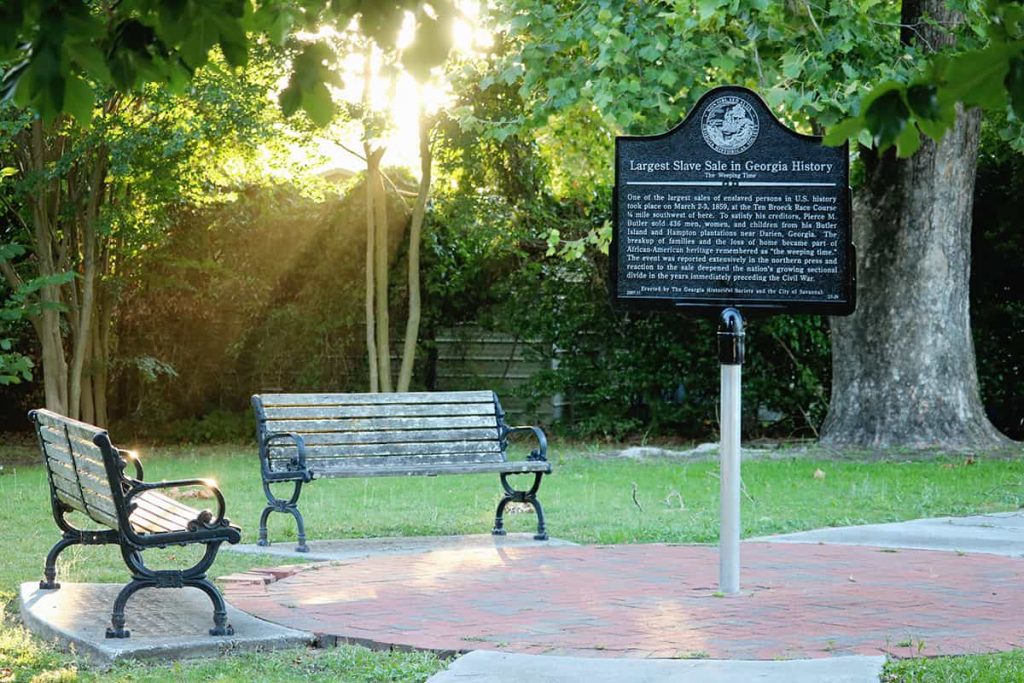
The blades of grass on all the Butler estates are outnumbered by the tears that are poured out in agony at the wreck that has been wrought in happy homes, and the crushing grief that has been laid on loving hearts . Q.K. Philander Doesticks , What Became of the Slaves on a Georgia Plantation: Great Auction Sale of Slaves at Savannah, GA , 1863
The race track is long gone, but you can find a Historic Marker commemorating the event 1/4th of a mile from where the sale took place.
I’ve already mentioned that few places in Savannah make me emotional, but this is one spot that brings tears to my eyes.
The marker sits on a beautiful sliver of land with two nearby benches where you can contemplate one of the darkest moments in this country’s history.
It’s a peaceful spot, located right in the middle of a typical west side Savannah neighborhood full of modest, single-family homes.
As you can see in the photos above, it looks very beautiful at sunset.
- Location: The intersection of Augusta Avenue & Dunn Street, Savannah, GA 31415
- Tickets: None needed. It’s a public area and on city-owned property.
- Parking: Parking in the immediate area is free, but a bit difficult to find. There’s no dedicated parking for the site, and it’s right off of a fairly busy road. You can park on Dunn Street, but please be respectful of the sweet neighbors who live there and don’t block access to and from their homes. NOTE: This is an area I’d advise first-time visitors to avoid after dark.
- Time to Allot: Plan to spend 10 to 15 minutes on site.
There is currently a contentious debate about proposed use for land surrounding the site of the original Weeping Time event, which is slated to house a Salvation Army homeless shelter.
For the record, I’m against using that location for that purpose.
I would like to see The Weeping Time property and the surrounding land utilized as a memorial site and educational center, similar to the Penn Center on St. Helena Island in S.C.
Related Reading: Unearthing the Weeping Time: Savannah’s Ten Broeck Race Course and 1859 Slave Sale
Colored Carnegie Library
Known as the “Library for Colored Citizens” or the “Colored Carnegie Library”, this was one of the only spaces in Savannah where Black families had public access to books in the early 1900s.
Blacks weren’t allowed in the city’s main library at the time (the Bull Street Library), since the library system in Savannah didn’t fully integrate until 1963.
The library was funded by a Carnegie grant of $12,000.
The Colored Library Association of Savannah used donations from the community to purchase the land, and then the building was completed in 1915.
It closed in 1997 due to a water leak in the roof, but reopened a few years later after undergoing a massive renovation that cost $1.3 million.
It still operates as a library today.
Supreme Court Justice Clarence Thomas wrote in his memoirs that he spent many hours in the library doing research as a young adult.
He returned to Savannah in 2004 to help celebrate the library’s reopening.
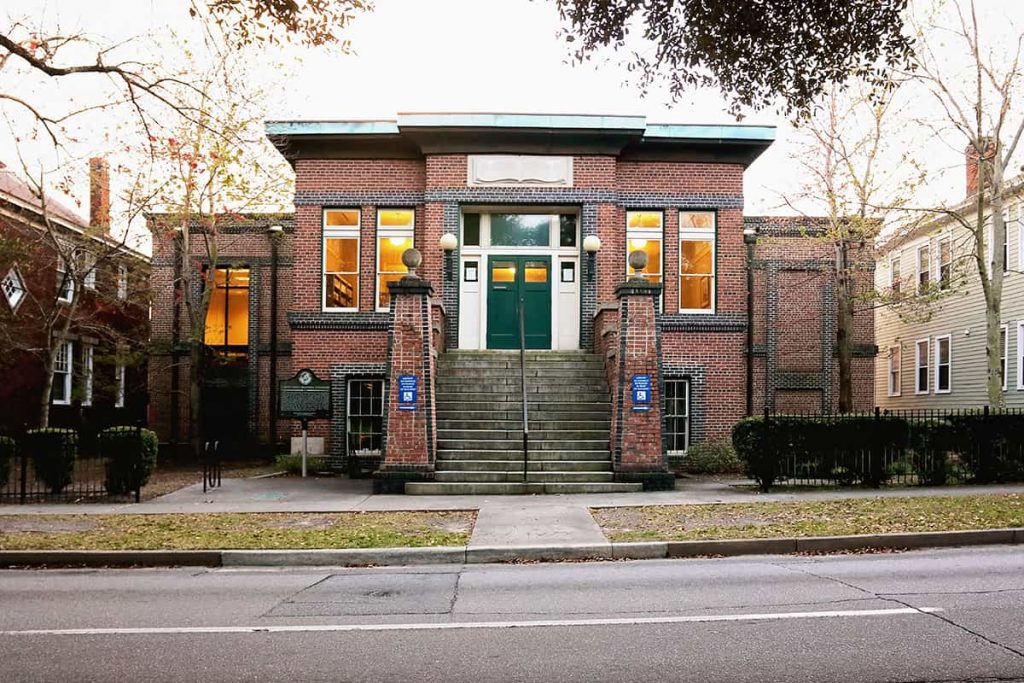
The library was listed on the National Register of Historic Places in 1974. It’s currently part of the Live Oak system of libraries.
- Website: Carnegie Library
- Location: 537 E Henry Street, Savannah, GA 31401
- Tickets: None needed. It’s a public library.
- Time to Allot: It’s an active library, so it isn’t particularly meant for touring. If you go, please be observant of those who are there for its intended purposes. If you only stop by to see the exterior, plan on spending 5 to 10 minutes.
Related Reading: A Local’s Guide to Laurel Grove South
Ralph Mark Gilbert Civil Rights Museum
On Martin Luther King, Jr. Blvd., in what was once the heart of Savannah’s Black-owned business community, you’ll find a three-story building full of exhibits on the era of Jim Crow, racial injustice, and the Civil Rights movement in Savannah.
The exhibits contain historic photos, documentaries, and interactive pieces about discrimination, boycotts, the role of the KKK in the South, and the birth of the NAACP in Savannah.
You’ll also learn about some of the biggest trailblazers in Savannah’s Civil Right movement, including Dr. Ralph Mark Gilbert (who served as the pastor at First African Baptist Church for 16 years), Westley Wallace Law aka W.W. Law, and Rev. Hosea Williams.
Displays posted throughout the museum show the horrific treatment of Blacks in the South during Jim Crow times.
You’ll see signage pulled from local businesses denoting “Whites Only” and “No Negroes Allowed” and displays showing what it was like to sit at a lunch counter during the time of segregation.
Even the building that houses the museum is historic.
It originally served as the Wage Earners Savings Bank, which was founded by Blacks in the early 1900s. It was instrumental in funding many Black-owned Savannah businesses.
The museum does an incredible job of educating visitors on Civil Rights issues as they relate to Savannah, specifically.
It will open your heart to the struggles many faced on a daily basis in Savannah, some of which still exist in the South today in one form or another.
Many of the docents are locals who lived through the Jim Crow era. They provide personal accounts of their experiences in Savannah.
The museum offers an incredible opportunity to speak with them and hear their accounts first-hand!
- Website: Ralph Mark Gilbert Civil Rights Museum
- Location: 460 Martin Luther King, Jr., Blvd., Savannah, GA 31401
- Tickets: $6 to $10
- Parking: Street Parking in the immediate area is metered, or you can park at the nearby Visitor Center and walk.
- Time to Allot: 2 hours
Local Insight: Savannah has a long history of conflict-free protests regarding social injustices. During the Jim Crow era, the local Black community worked together using peaceful methods to enact positive changes, primarily due do the leadership of W.W. Law. In recent years, when other cities saw violent protests and rioting during BLM events, Savannah’s protests were peaceful and without incident.
Guided Black History Tours: Led by Locals
Most of the spots listed above are places you can tour on your own.
If you’d prefer a guided tour where you’ll be able to see multiple points of interest, I recommend exploring the city with a local who can provide first-hand knowledge regarding Black culture in the Deep South.
There are some incredible guides in Savannah who can escort you through the city while providing personal accounts of their experiences as direct descendants (in many instances) of the Gullah Geechee people.
Underground Tours of Savannah
The most popular tour led by Underground Tours of Savannah is the From Slavery to Freedom Tour .
It’s a walking + riding tour through downtown Savannah showing where African Americans lived in the Historic District during the late 1700s to mid 1800s and how they were treated during that time period.
Sistah Patt is the heart and soul of Underground Tours.
She’s incredibly knowledgeable and presents Savannah’s African history in a very engaging manner.
Folks who take her tour rave about her storytelling ability, as well as her bigger-than-life personality…
We just did the Sistah Patt tour today! She is so warm and friendly. Very engaging storyteller and she speaks matter of factly. We learned so much on the tour. The history of the brick walks and honestly the way Savannah tries to deny the slave history was fascinating. Loved! Melissa C. – via my Savannah First-Timer’s Guide private Facebook group
The tour will take you on a few blocks through the NW section of the Historic District. You’ll stop at points of interest such as the African American Monument (mentioned above) and the Cluskey Vaults .
Sistah Patt’s current project is working as an advocate to encourage the renaming of two of Savannah’s squares . Calhoun Square and Whitefield Square were named after men who were avid supporters of slavery.
- Tour Info: From Slavery to Freedom
- Location: 223 Martin Luther King, Jr. Blvd (please verify on your ticket receipt)
- Tickets: Approximately $60 for 2 guests
- Parking: Street parking in the immediate area is metered, or you can park at the nearby Visitor Center and walk.

Footprints of Savannah Tour
This tour is led by Vaughnette Goode-Walker, aka “Sistah V”.
It’s one I’ve yet to try but I’m looking forward to going and have only heard good things about it! I’ll add some photos once I’ve been.
Ms. Goode-Walker is the director of the Ralph Mark Gilbert Civil Rights Museum. She’s also a local historian who has authored two books about Savannah.
Additionally, she was a key consultant in the King Tisdell Cottage restoration and its conversion into a museum.
When I last spoke with Mrs. Goode-Walker (spring of 2023), she had placed her walking tours on hold while busy with an addition to the Civil Rights Museum. You might want to opt for Sistah Patt’s tour in the meantime.
- Facebook: Footprints of Savannah
- Location: Contact for meeting point
- Tickets: Contact for rates
- Time to Allot: 1 hour
Day Clean Journeys Tour
I haven’t done this tour yet, either, but it’s another I look forward to trying.
It’s led by local professor and historian Dr. Amir Jamal Touré. The tour comes highly recommended by Leitha, who was the docent I met while touring The Beach Institute.
Dr. Touré has been recognized by the State of Georgia as an “Outstanding Georgia Citizen.” He is known for his expertise on the Gullah Geechee community.
He was actually the model used to create the male father figure in the African American Monument!
Day Clean (dey-kleen): Each day is a new day; each day starts anew; no matter what occurred yesterday – today is a new day! Gullah Geechee Philosophy and meaning behind the name “Day Clean Journeys”
- Facebook: Day Clean Soul
I know I’ve covered a lot of information in this post, but so many visitors focus on ghost tours while they’re in Savannah that I think the more important cultural sites are often overlooked.
Here’s a free printable to help you remember each of these sites as you make your way around the city.
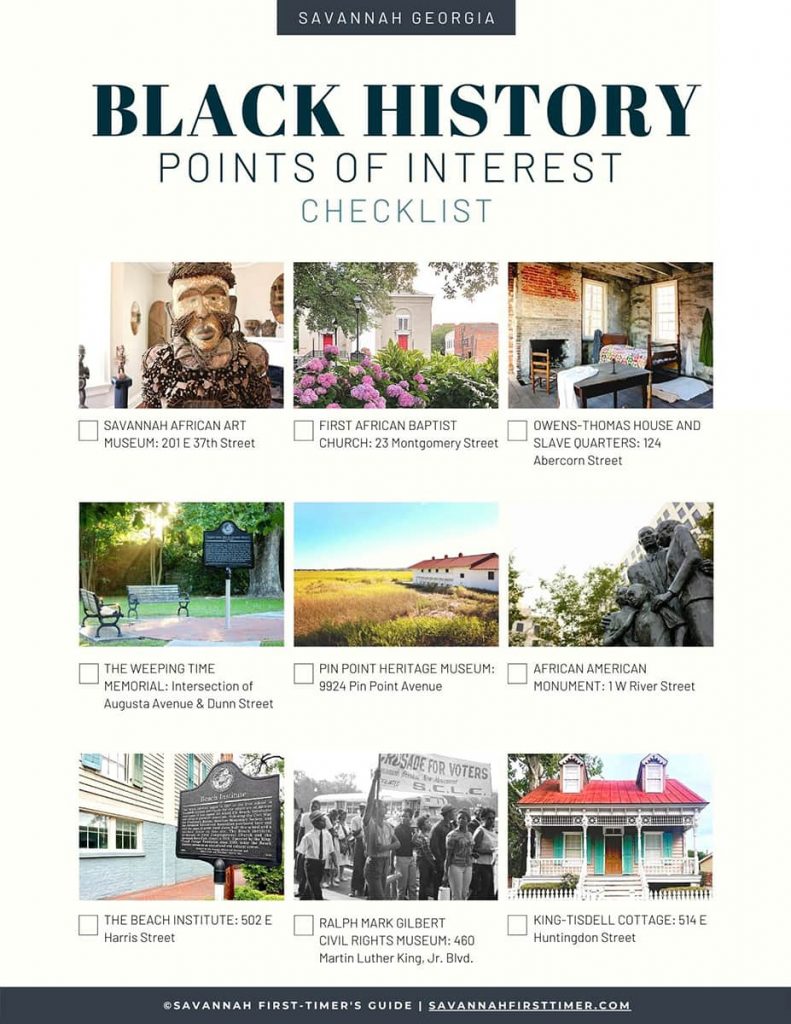
Savannah Travel Guide
Ok, that wraps up my thoughts on some of the best Black history tours in Savannah. If you’ve experienced an informative tour that I missed here, please let me know in the comments below!
If you’re looking for resources to plan a trip to Savannah, here are a few I’ve created…
- Savannah First-Timer’s Guide – My ebook combines my most helpful tips from this website into a downloadable guide. You’ll also gain access to my (very active) private Facebook group with your purchase. Use it to pick my brain about your upcoming travels or read trip reports from others who have recently visited.
- Savannah FTG Free Resources Library – Get a free printable list of “50 Things To Do on Foot in the Historic District (No Car Needed!),” plus more fun goodies.
For more things to do in the city, check out my Savannah trolley tour reviews or read about the best Bonaventure Cemetery tours .
Do you have any questions about Black history tours in Savannah? Let me know in the comments below!
Love this post? Pin it now to save for later!
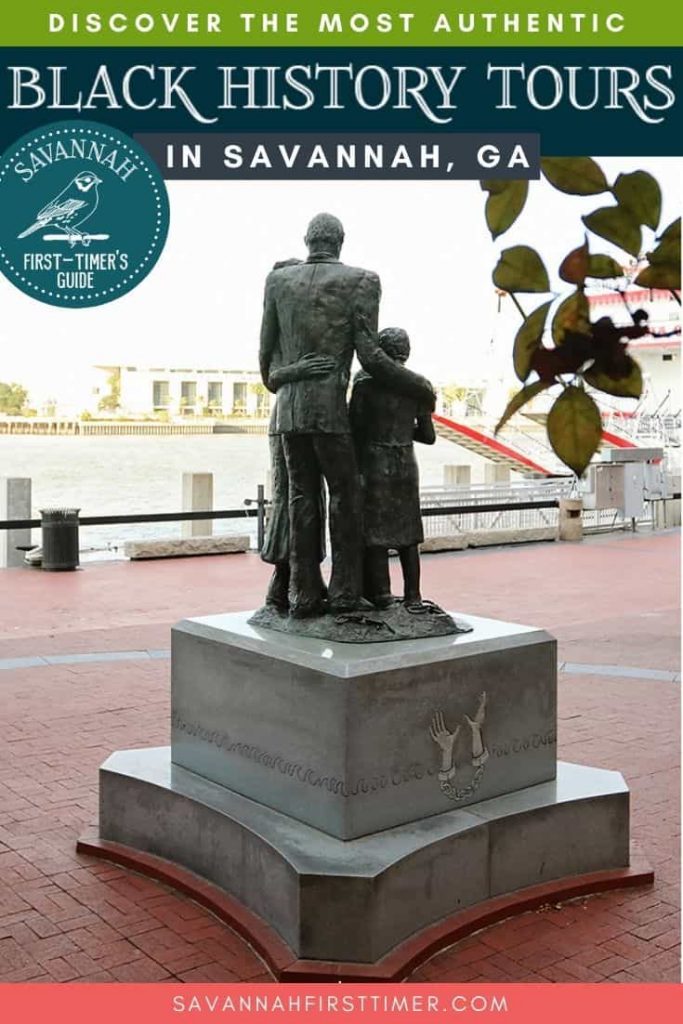
16 Comments on Black History Tours Savannah: Which Ones Are Best?
What great info and love all the bits of history that I wasn’t aware of! I’d definitely want to visit Pin Point and sunsets on Butter Bean Beach with that name! I had no idea the plantation owners usually lived in town. I always assumed they lived on the plantations. So informative!
I thought the same thing until I went on the Owens-Thomas tour! That’s one of the nice things about Savannah…there’s always something new to learn.
This is such an informative article and I love how there are a lot of educational places in Savannah. I’m definitely keeping this post handy for when I return there. 🙂 Thank you for sharing!
This is such an informative post and I found it very emotional. I find it hard to understand why humans treated other humans like this. I hope this never happens again and it is great there are so many museums and memorials to remind us. All lives matter.
This is an absolutely incredible post, I can’t wait to get back to USA so I can visit Savannah! I can’t imagine how much you learn on one of these tours. Definitely bookmarking for later, thanks for sharing!
What a fantastic post. I had not really heard of Urban slavery before (but as soon as I read it, it made sense.) It is sobering to visit sights like this, rather than just reading about them.
The Savannah African Art Museum looks really interesting, too.
This is so informative and a great guide to which tours to do in Savannah. I’ve never been to GA but would love to learn more about the history
Its great to explore the history of a country and its people, and gain a greater understanding of how it came to be.
Hi, Somewhere we saw a black history tour led by a man..and will do private tours. Do you know about this tour? Thanks, Judy
Hi Judy! I believe that’s Dr. Toure, who is mentioned at the bottom of the post under Day Clean Journeys. Try reaching out at this number: (912) 220-5966
Erin, thank you for this incredible post. It is so informative and is such an important part of US history that is oftentimes sadly overlooked or maybe even omitted. Thank you for bringing attention to these places that can be so emotional. and tough to visit. I will definitely share this with friends and family that visit Savannah.
wow! I had no idea there were so many tours available to learn more about Black History in Savannah. Every time I read one of your posts, I realize we need to get back to Savannah–esp considering we live in GA! Thanks for all the information, I look forward to taking some of these tours. It’s so important we learn more about this part of our country’s history.
Thank you for this well researched informative article. I have just returned from my first visit to Savannah and didn’t read this until I returned home. I was able to visit a few of the mentioned sites. Your photos are much better than mine!
I’m glad it was helpful! Since I live downtown, I’m able to visit the museums at random times when they aren’t very busy, so that makes it easier to get good photos 🙂
Checking today, the underground tours of Savannah is no longer listed
I messaged Sistah Patt, so hopefully she’ll be able to fix the site quickly. She is still offering tours. Until her site is back online, you could try reaching out to her via her company’s FB page: https://www.facebook.com/SLAVESINTHECITY
Leave a Reply Cancel reply
Your email address will not be published. Required fields are marked *
Save my name, email, and website in this browser for the next time I comment.
GPB Originals
Browse by genre, featured programs, featured programs & series, more gpb news, for kids & teachers, ghsa sports, high school football, browse by type, browse by category, for parents & caregivers, support gpb, watch live | the atlanta press club loudermilk-young debate series: georgia supreme court at 4:45 p.m., tagged as: , a tour of the underground railroad, share this page.
- Georgia Stories
- Change and Conflict
Savannah tour guide Ogbanna explains the Underground Railroad and the First African Baptist Church in Savannah, established in 1773. Murry Dorty of the Coastal Heritage Society explains how songs had hidden meanings to help and inspire runaways along the way.
Georgia Standards of Excellence
Social studies.
Explain the importance of key issues and events that led to the Civil War; include slavery, states' rights, nullification, Compromise of 1850 and the Georgia Platform, the Dred Scott case, Abraham Lincoln's election in 1860, and the debate over secession in Georgia.
1. Why would escaping from slavery be referred to as "stealing yourself"?
2. In order for a slave to escape from a Plantation, what are the dangers he/she would have to avoid?
1. The songs "Steal Away" and "Wade in the Water" are heard in the video. Listen to a full version of these songs or locate copies of the lyrics to find the clues that could help runaway slaves.
2. Draw your own political cartoon that depicts how you feel about slavery. It can be stick people or you may use your own drawing expertise. Make sure that others can tell exactly how you feel about it. Each object should visibly represent something (e.g., Elephant: Republicans; Donkey: Democrats; Uncle Sam or Eagle: United States; etc.).
abolitionist: one who fought to abolish (end) slavery during the time that slavery was legal
contraband (as related to slavery): a slave who escapes to the North
fugitive: a person who is running away; usually refers to people running from the law
Fugitive Slave Law: a law passed by the Federal Government before the Civil War that demanded that runaway slaves be returned to their masters once proof of ownership was furnished
moralist: a person who attempts to impress his or her version of right and wrong upon other people
remorseless: the state of being unapologetic and unashamed of one's own cruelty
trifle: something of little significance or value
Underground Railroad: the network of people and places that, in tandem, allowed slaves to escape to freedom in the North
Teacher's Guide
1. Why would escaping from slavery be referred to as "stealing yourself"? Because slaves were considered the property of their masters at the time, and not equal human beings with rights, to flee the bondage of slavery could be seen as stealing property. And since a slave was property, they were stealing themselves from their masters.
2. In order for a slave to escape from a Plantation, what are the dangers he/she would have to avoid? Escaping from the Plantation would involve secrecy among the other slaves (who were not always willing to “cover” for someone trying to escape for fear of beatings by the overseer or owner), hunting dogs (who tracked down runaway slaves and injured or killed the slave), fear of being caught (which was worse than the actual trial of walking through woods and along desolate unknown places), etc. Students need to remember that it was illegal to teach a slave to read, so most of them were illiterate (could not read or write). Signs were posted, such as a lit lantern on a fence post indicated a safe house, which did not require the ability to read. Students should come up with reasonable dangers that would have been faced in the mid-1800s.
Support Materials
New georgia encyclopedia, georgia stories segments.
The period encompassing the decades before the Civil War shows two distinctly American societies diverging both economically and ideologically. As the North grew into an industrial powerhouse, it continued to benefit from the South’s primarily agrarian system, built on a foundation of forced labor. These profoundly different cultures and perspectives would eventually clash in the War Between the States.
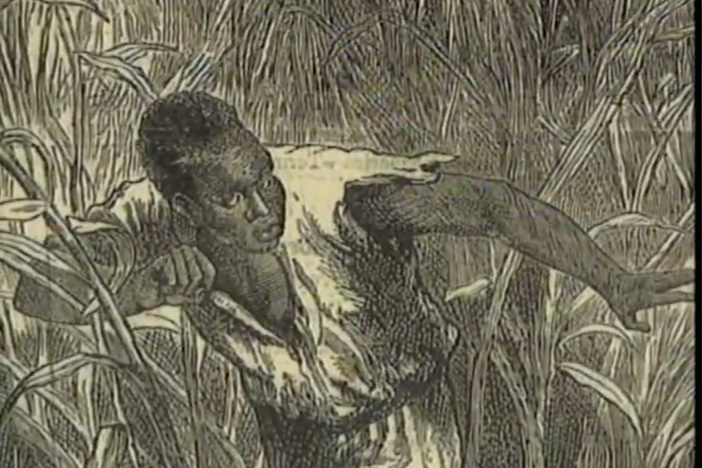
A Trip to Hog Hammock
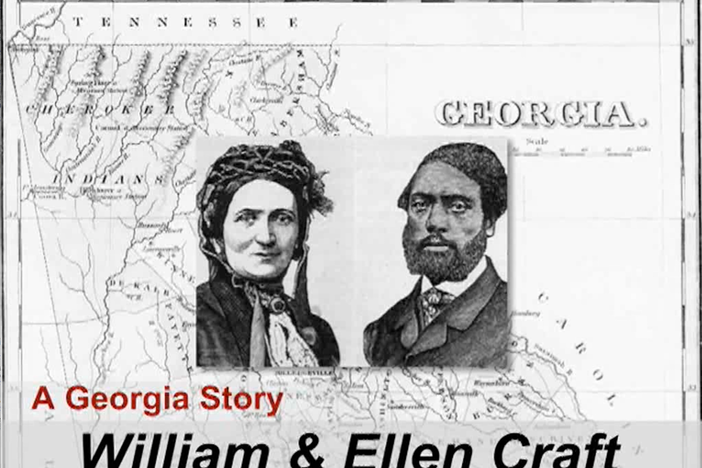
Escaping Slavery: The Story of William and Ellen Craft
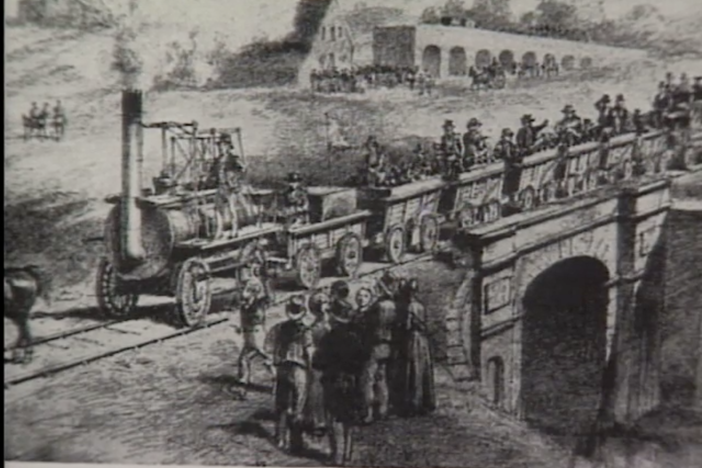
From River to Rail: Georgia's Transportation History
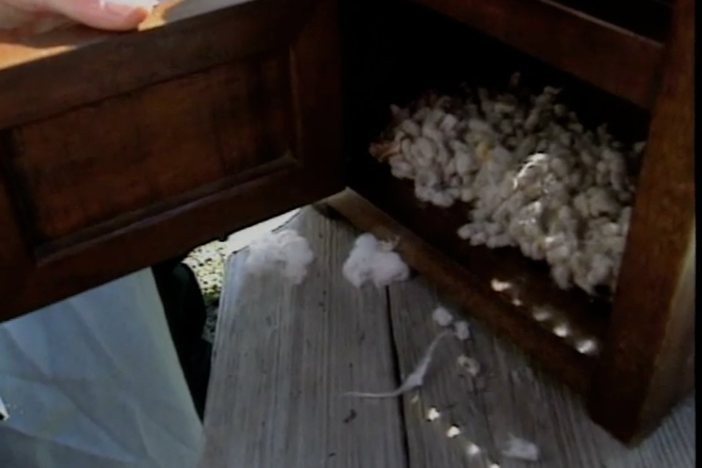
Making Cotton Pay
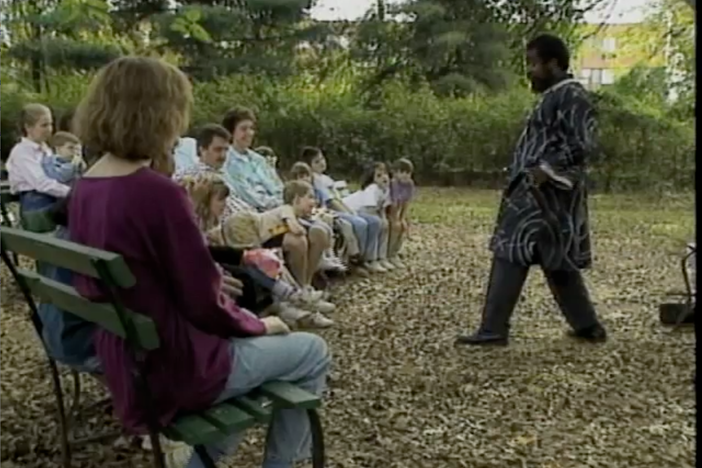
The Roots of Uncle Remus
Connect with gpb education.
Underground railroad history fills the pews

After the sermon has concluded and the choir robes have been put away, crowds continue to flock to historic First African Baptist Church by the thousands.
Tourists are coming with a desire to see artifacts of African-American history.
But few other historic sites in the Savannah area have fully tapped the potential for black history research and tourism.
"When people talk about historic Savannah, oftentimes African-American sites are overlooked," said Melissa Jest, Historic Savannah Foundation neighborhood coordinator. "The story being told about Savannah's history has holes in it."
Tourists can sample some of the richest black history Savannah has to offer at First African. The church was organized and established by former slaves and is one of the first black Baptist churches in America.
The intricately crafted building, adorned with beautiful stained glass, was constructed by skilled free and enslaved black members in 1859.
But what intrigues the masses is the church folklore and oral history about the church's role in the Underground Railroad.
"There are nine patch-quilt patterns in the ceiling, which signify a safe haven. There are holes in the floors with a pattern that is a spiritual symbol in Africa, 36 spread evenly throughout the floor," said church historian Karen Wortham. "And a second wooden floor was built beneath the church floor, and under that there are tunnels that lead to the river."
Unusual designs on the pews, according to church history, are messages of hope written in the native script of fugitive slaves who once hid in secret spaces in the floor.
But this incredible story also has holes.
Excavations have never been undertaken at First African.
No linguist has ever officially researched the pew writings, and the congregation continues to use them for regular sanctuary seating.
"No one has actually pushed it. Not the city. Not the community. Not the colleges," Wortham said. "There is a lot in this place that is just waiting to be discovered and told."
Adding to the mystique is the lack of documented evidence pertaining to First African's Underground Railroad activities.
Many Underground Railroad stories lack hard facts to back them up, according to Fergus M. Bordewich, author of "Bound for Canaan, The Epic Story of the Underground Railroad, America's First Civil Rights Movement."
"Oral tradition is not the same as history," he said.
Very few fugitives from Georgia ever succeeded in reaching the North, or the Underground Railroad, Bordewich said. And it was extremely risky for churches to harbor fugitives.
"The risks for blacks in the South, where they had no legal protection, were colossal," he said. "Many black congregations, even in the North, wanted nothing to do with law-breaking."
But the National Underground Railroad Museum in Ohio includes First African Baptist as one of two possible Underground Railroad sites in Georgia. And the National Park Service Special Resource Study on the Underground Railroad includes First African as one of many "potential national historic landmarks important to the Underground Railroad story."
Wortham has no doubts that the early church leaders, who came out of slavery, would have been willing to take risks and would have known how to have kept quiet.
Although freed during the Revolutionary War, church organizer George Liele had to flee from the heirs of his former enslaver to escape re-enslavement, according to National Park Service Ethnography Program research.
Church pastor Andrew Bryan purchased his freedom and was attacked for preaching liberation through the Gospels.
And in 1859, the same year First African Baptist construction was completed, an auction of 400 slaves took place in Savannah. It was one of the largest in U.S. history.
There are more reasons why First African would harbor slaves than why it would not, Wortham said, although there are no church records to document any of the Underground Railroad story.
"The oldest church record is from 1873," she said.
But what they do have is compelling enough.
"The building itself is a testament to the history," she said.
Work is being done to fill some of the holes in Savannah's heritage and history tourism trade.
In October, 6,000 people toured the Owens-Thomas House just to see its famed architecture and period furniture. But tours soon will feature details about the lives of the wealthy families and the slaves who lived and worked there.
A study was completed to determine what tourists wanted to see and hear when they visited.
Based on those findings, federal and local funds were devoted to restore the Owens-Thomas House and reinterpret its exhibits with particular focus on the way the urban slaves who worked there lived and interacted with their enslavers.
Vaughnette Goode-Walker, the interpretive project manager for the historic Owens-Thomas House, has documented details that blow away many traditional views about the life of urban slaves.
"People want the whole story," Goode-Walker said.
You are using an outdated browser. Please upgrade your browser to improve your experience.

Stay Connected Contact Us
Address & Details
Send your message.
Please ensure you select your subject in the dropdown below so that your message will be directed to the correct party.

IMAGES
COMMENTS
History Tours. Live Broadcast. Online Giving. FAB Newsletter. ... First African BC 23 Montgomery Street Savannah,, GA, 31401 (912)233-6597. Directions ... First African Baptist Church 23 Montgomery Street Savannah, GA 31401 Phone: 912.233.6597 Contact Form Get Directions . Quick Links ...
Historic Tours: First African Baptist Church Savannah, GA. The oldest Black Church in North America. Tour information and online purchase. About. Our Pastor; Our Pastor; Our History; ... First African Baptist Church 23 Montgomery Street Savannah, GA 31401 Phone: 912.233.6597 Contact Form Get Directions . Quick Links. Online Giving Convenient ...
Tours of First African Baptist Church, given by members of the church, are available Wednesday-Saturday, at 3pm. Adults $15, students/military/seniors (60+) $12, young children (0-5) free. Tour reservations can be made online. More details. A small museum, which you can see as part of the tour, displays memorabilia dating back to the church's ...
Visiting the First African Baptist Church. The First African Baptist Church offers tours of their historic building. You can contact them at (912) 233-6597 for more information. They offer these guided tours on every day of the week except Sunday and Monday. Of course things could change so give them a call.
1. Discover the untold stories of Savannah's rich Black history with the Savannah Black History Experience. This immersive tour takes you on a captivating journey through the city's iconic sites, shedding light on the profound impact they had on our Black founding fathers and mothers. From the historic First Bryan Baptist Church to the vibrant ...
Experience History. Welcome to. "JOURNEY BY FAITH" WEBSITE. Where you will experience the walking tour of the Antebellum Slave Market, A journey of slavery in Savannah until the Emancipation, First African Baptist Church (The oldest continuous black church in North America), and more.
Do you want to explore the history and culture of Savannah, Georgia, from a unique perspective? Join Journey by Faith, a walking tour that will take you to the Antebellum Slave Market, the First African Baptist Church, and other sites of significance for the African American community. To make a reservation, visit our Tour & Prices page and choose the option that suits you best.
Constituted in December 1777 by Rev. George Leile, the First African Baptist Church is believed to be the oldest continually active, autonomously developed African-American congregation in North America. The church building, constructed around 1859, served as the birthplace of the area's civil rights movement during the 1950s and 1960s. During the Civil War, runaway slaves were hidden in a ...
Learn about First African Baptist Church. The oldest Black Church in North America. Constituted December 1777. Rev. ... History Tours. FAB's rich and extensive history is shared. ... First African Baptist Church 23 Montgomery Street Savannah, GA 31401 Phone: 912.233.6597 Contact Form Get Directions . Quick Links ...
First African Baptist Church. 1,224 reviews. #12 of 227 things to do in Savannah. Religious Sites. Closed now. 1:00 PM - 2:00 PM. Write a review. About. First African Baptist Church was organized in 1773 under the leadership of Reverend George Leile and established and constituted in December of 1777 as a body organized believers.
First African Baptist Church. Savannah, Georgia, USA ... this National Historic Landmark played a pivotal role on the Underground Railroad. Offers worship services and tours, where you can see the holes in the floorboards that enabled slaves to breathe. ... Bonaventure Cemetery. 3.86 MILES. Less than a 10-minute drive east of Savannah's ...
First African Baptist Church, located in Savannah, Georgia, claims to be derived from the first black Baptist congregation in North America. While it was not officially organized until 1788, it grew from members who founded a congregation in 1773. Its claim of "first" is contested by the Silver Bluff Baptist Church, Aiken County, South Carolina ...
With Karen Wortham, Journey by Faith. Interior tour and history of Savannah's First African Baptist Church. $5 per person, or $4 per person for groups of 41 or more. Call 912-224-0973 for reservations or contact online. More details. Minibus & Car Tours. African American History Tour, 1hr30-2hrs With Jamal Toure, Day Clean Journeys. Tour ...
The First African Baptist Church in Savannah, Georgia is a vibrant Christian church with an incredible history. While the current pastor, Reverend Thurmond N. Tillman, guides his flock and nourishes their spiritual needs in the modern world, the congregation looks back on its rich history and eagerly educates visitors about the past.
First African Baptist Church is a registered historic landmark in the National Registry of Historic Landmarks and Places. It is thought to be the oldest continuous African-American congregation in America. ... Tours & Excursions; Tybee Island; Neighborhoods & Districts. ... Savannah, GA 31401 (912) 233-6597. Visit Website
Website: First African Baptist Church; Location: 23 Montgomery Street, Savannah, GA 31401; Tickets: $12 - 15; Parking: The church owns a private lot at the corner of Montgomery and W Bryan Streets where you can park for approximately $10. The funds go into a work rehabilitation program for otherwise unemployable individuals.
A Tour of the Underground Railroad. Savannah tour guide Ogbanna explains the Underground Railroad and the First African Baptist Church in Savannah, established in 1773. Murry Dorty of the Coastal Heritage Society explains how songs had hidden meanings to help and inspire runaways along the way. A Trip to Hog Hammock.
As a nonprofit of First African Baptist Church, George Leile Visions, Inc. manages and extends several ministries of the church. Rev. George Leile, the first pastor of First African Baptist Church was born in Virginia circa 1750. He was removed to Georgia where he was converted and baptized by Rev. Matthew Moore. Rev.
The Historic First African Baptist Church of Savannah,GA, Savannah, Georgia. 2,707 likes · 115 talking about this · 9,085 were here. The oldest continuous historically Black congregation in North...
The civil rights museum in Savannah, GA is named in honor of former pastor, Rev. Dr. Ralph Mark Gilbert, for his courageous work during the Civil Rights movement in the South." First African Baptist Church established the first federal credit union housed in a church in May 1954.
And in 1859, the same year First African Baptist construction was completed, an auction of 400 slaves took place in Savannah. It was one of the largest in U.S. history.
Sunday July 2. Service 6-25. Fulfillment 6/25. Service Times: First African Baptist Church Savannah, GA. The oldest Black Church in North America. Constituted December 1777. Rev. Thurmond N. Tillman, Pastor.
Tours; FAB Credit Union; Worship. Schedule; Map & Directions; Get Involved. Become A Member; ... Savannah, GA 31401 Phone No: (912)233-6597 ... First African Baptist Church 23 Montgomery Street Savannah, GA 31401 Phone: 912.233.6597 Contact Form ...